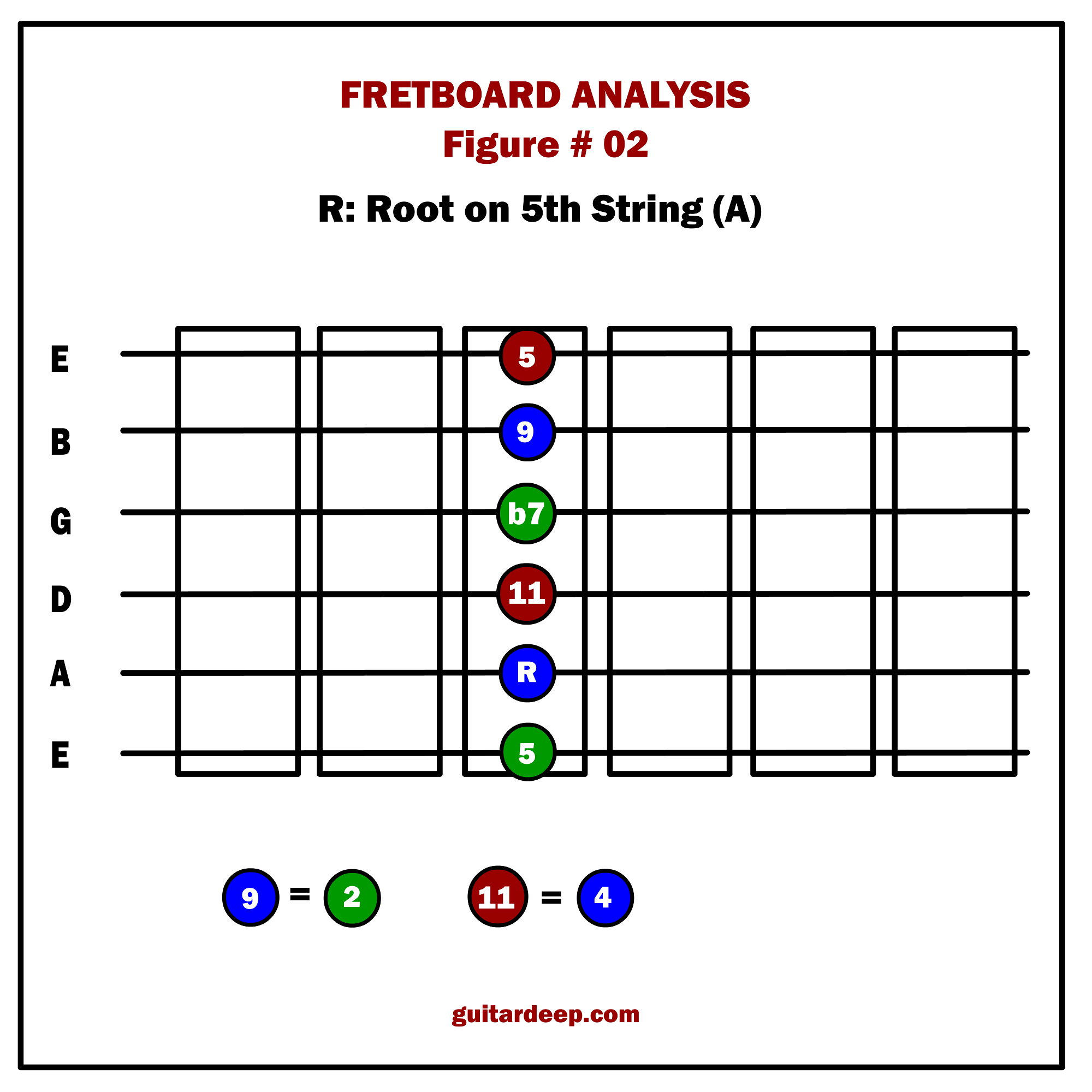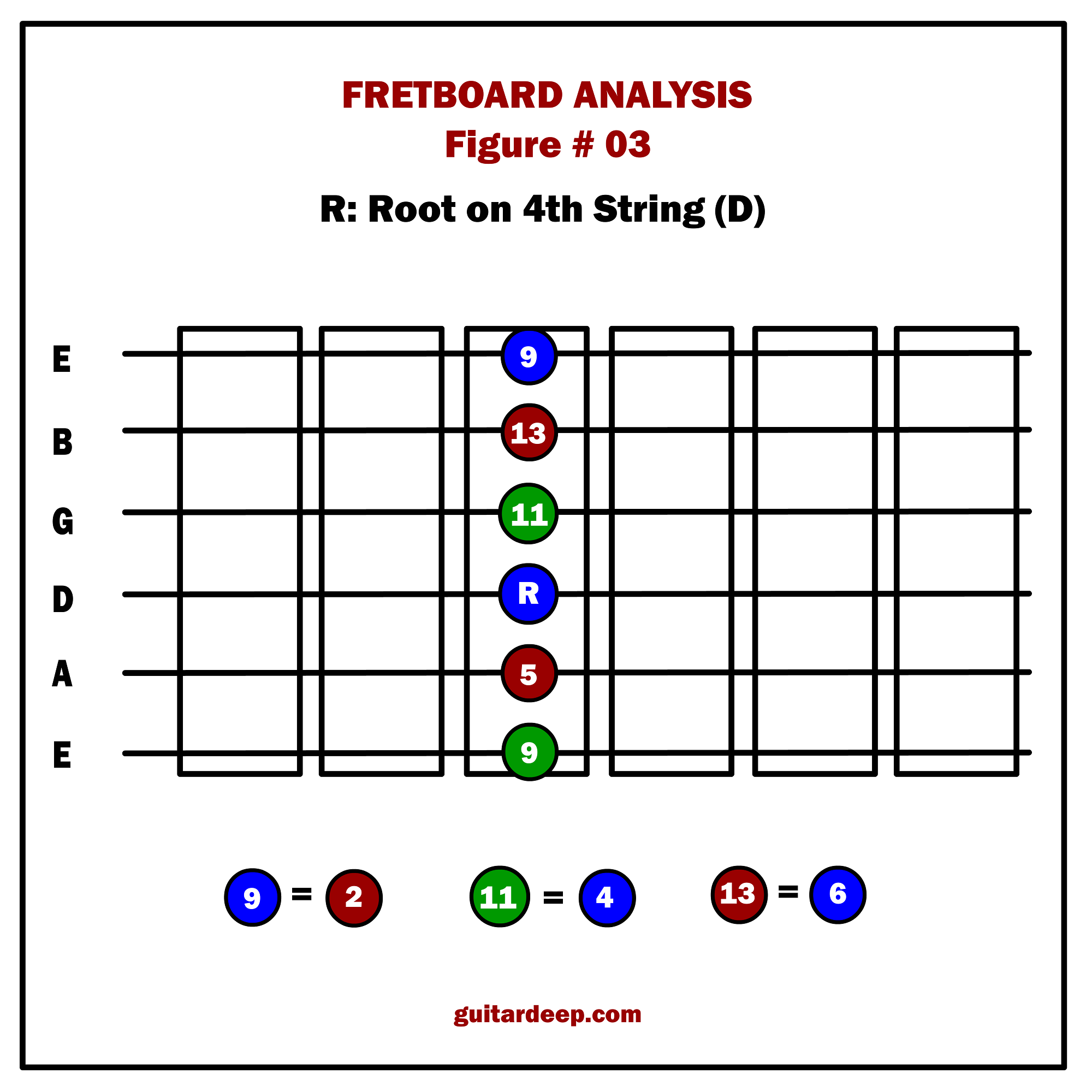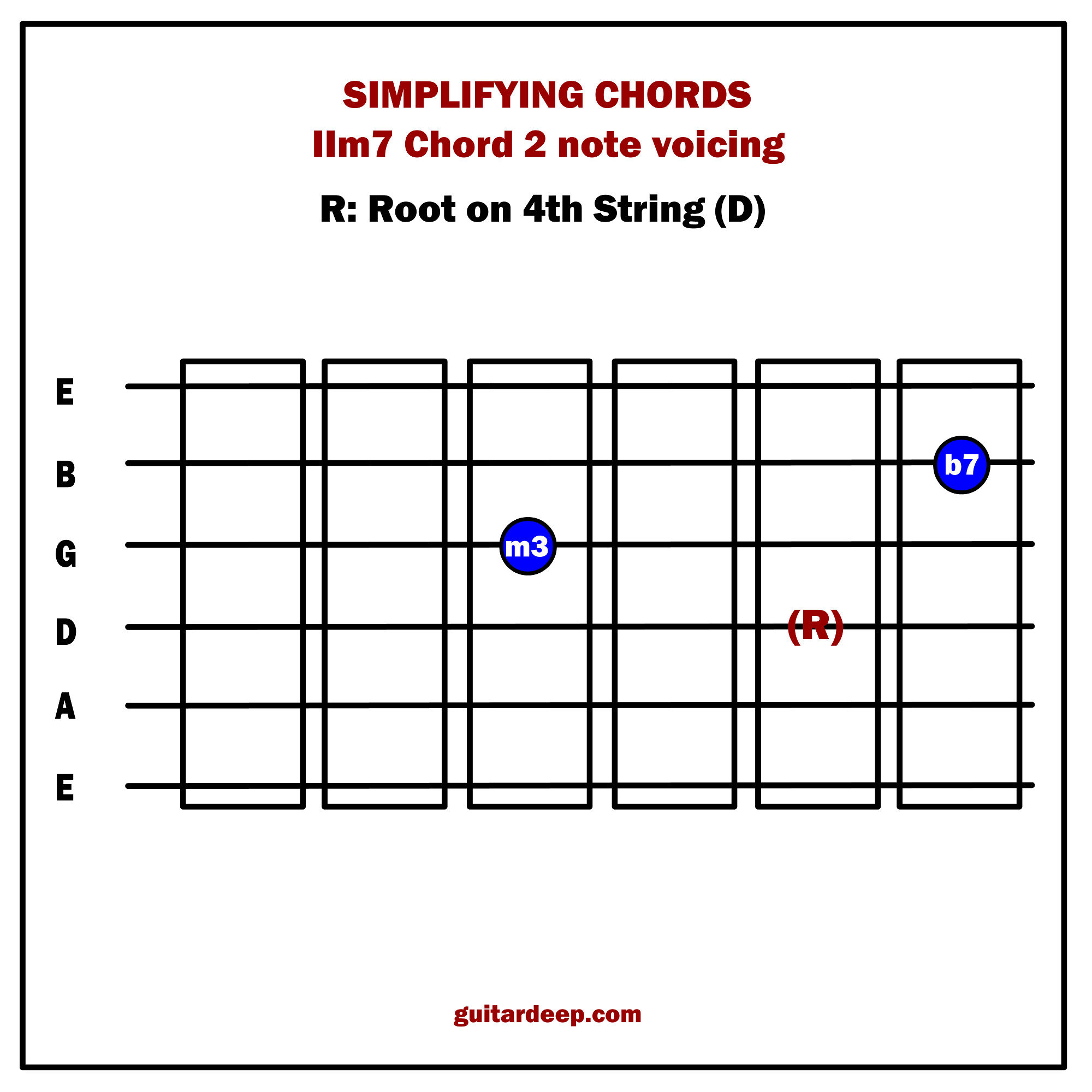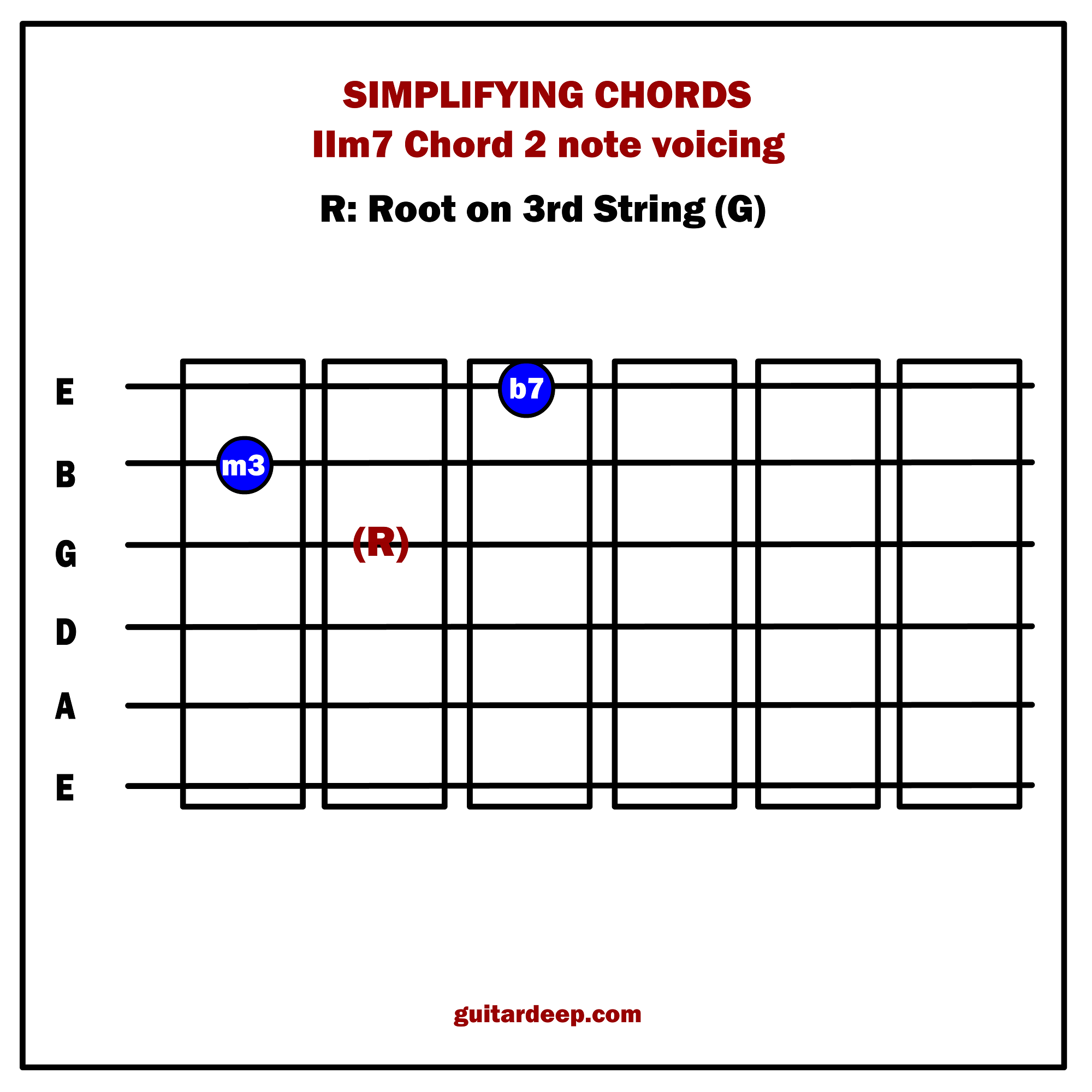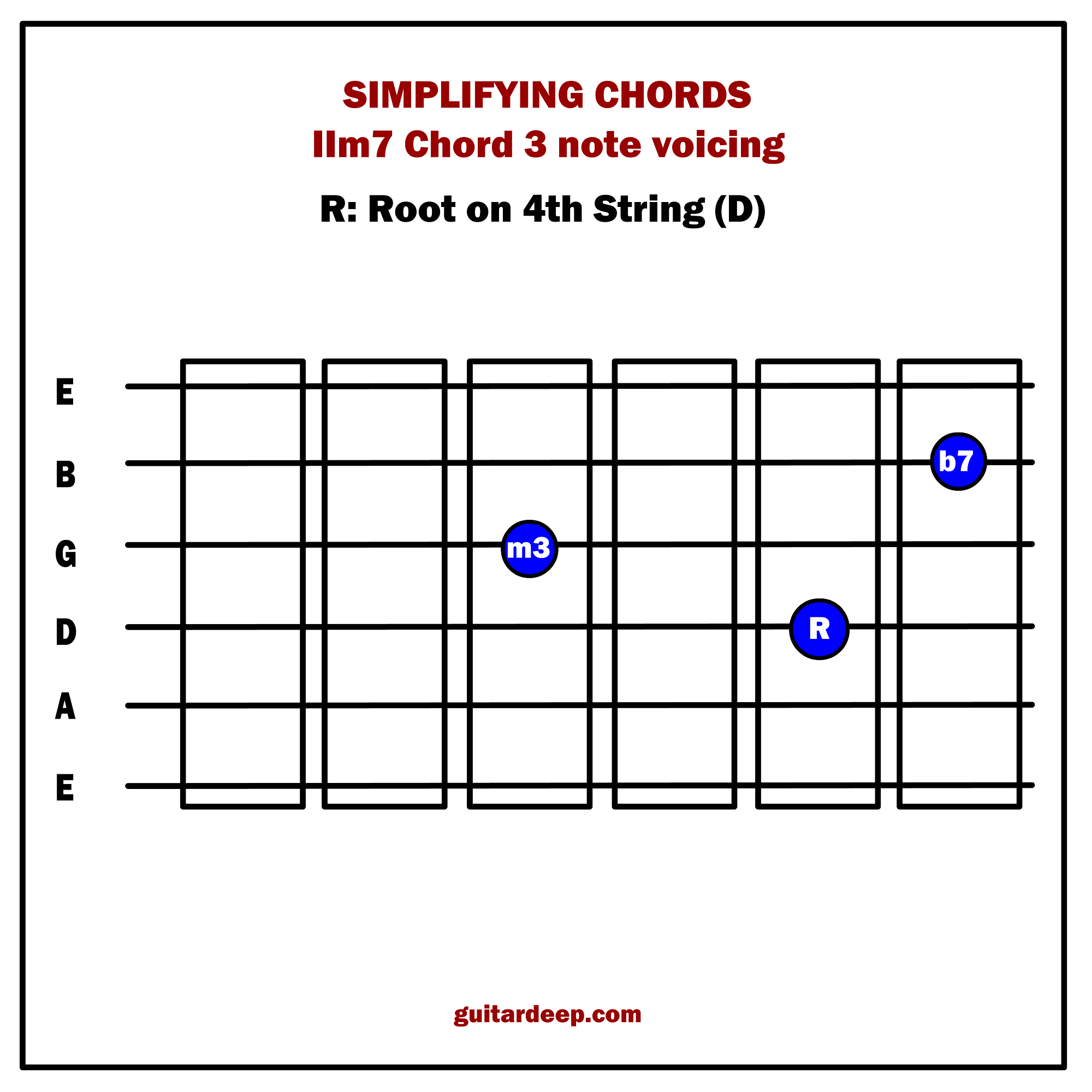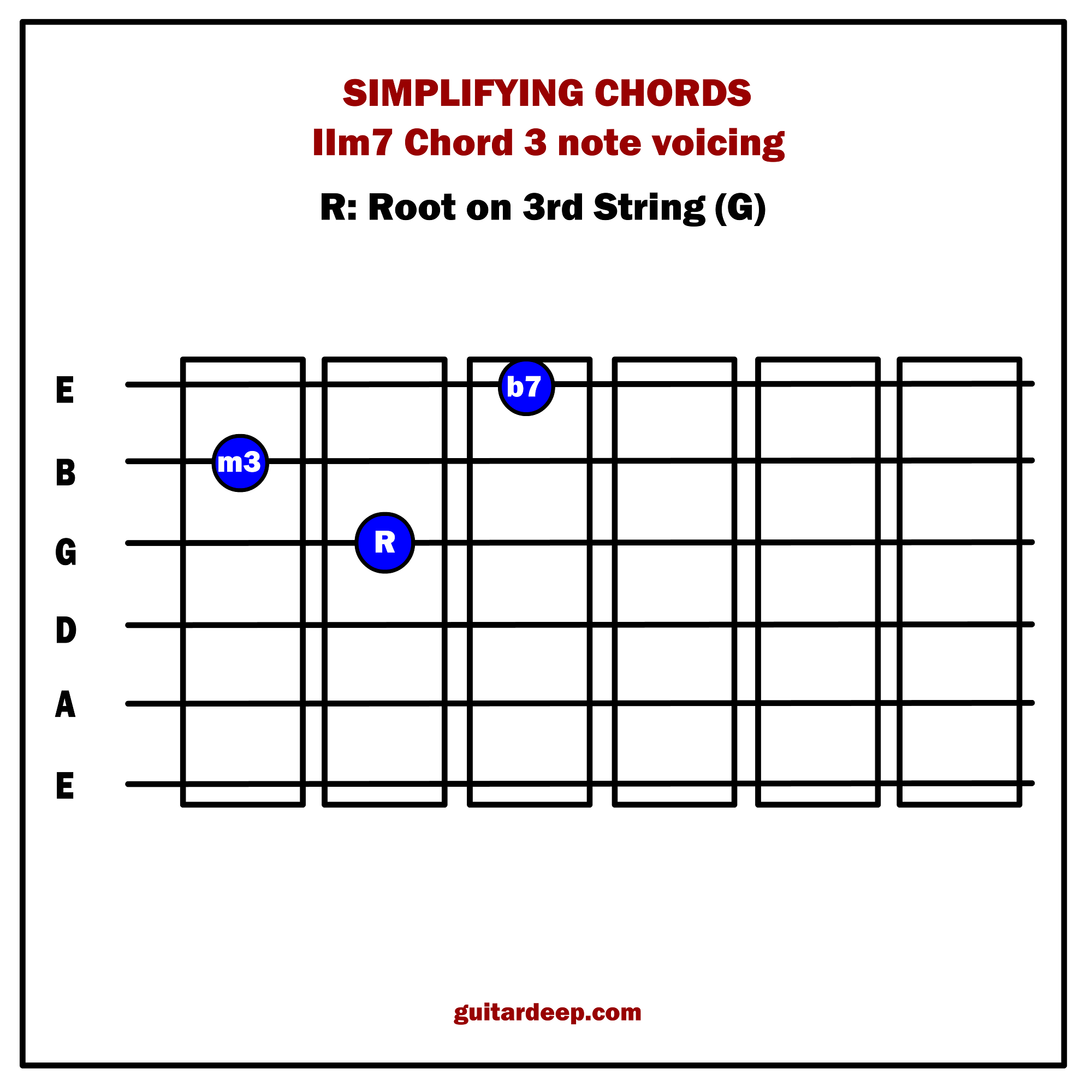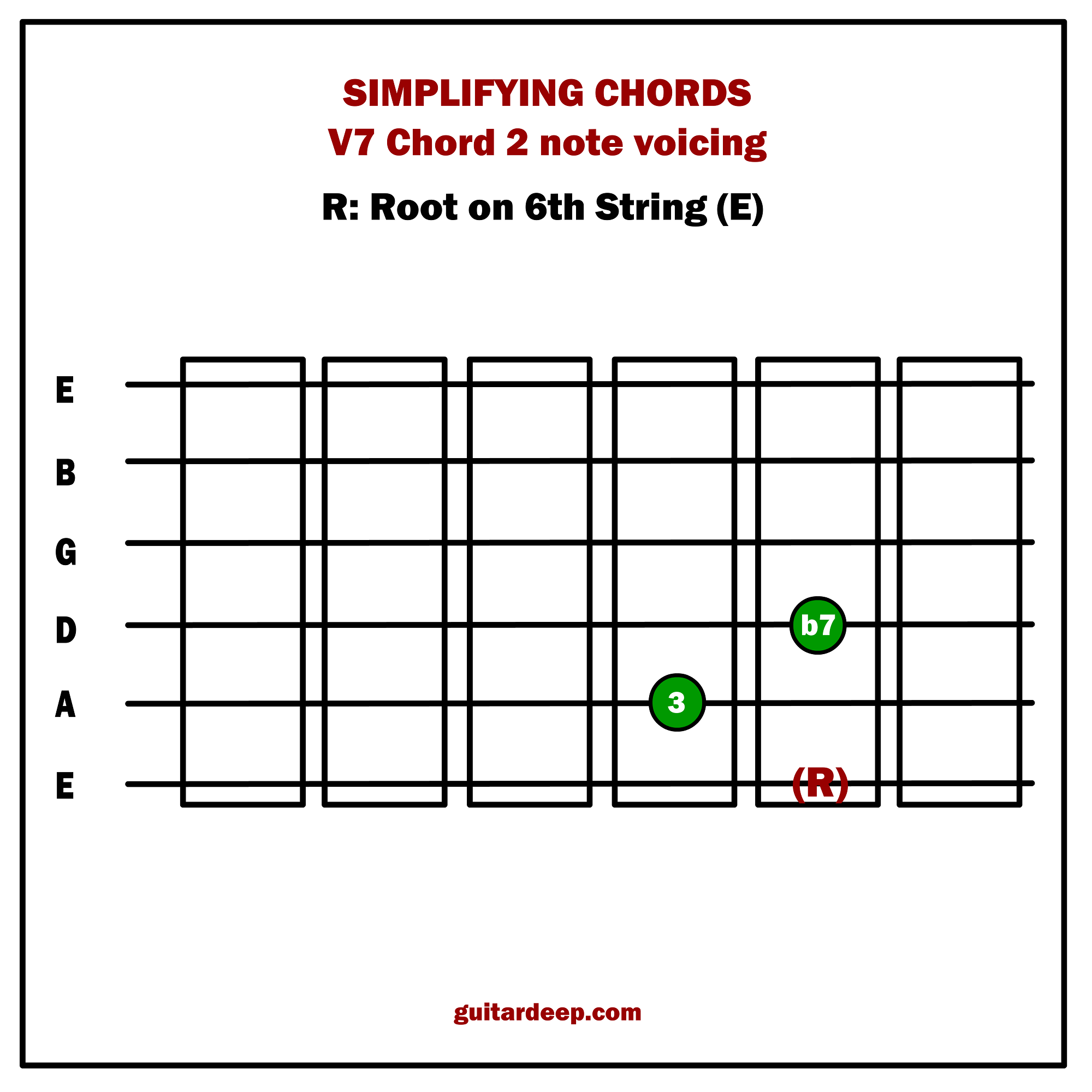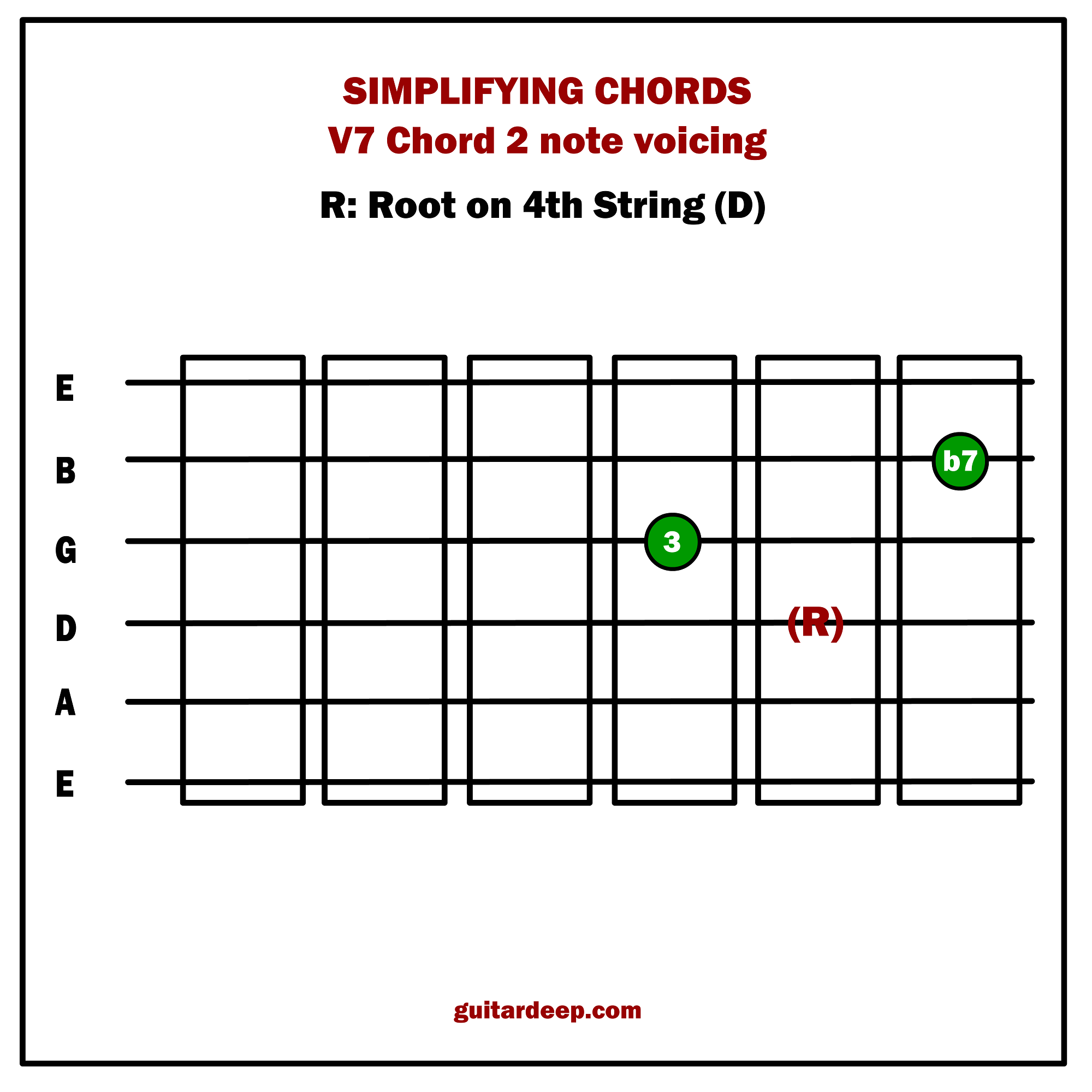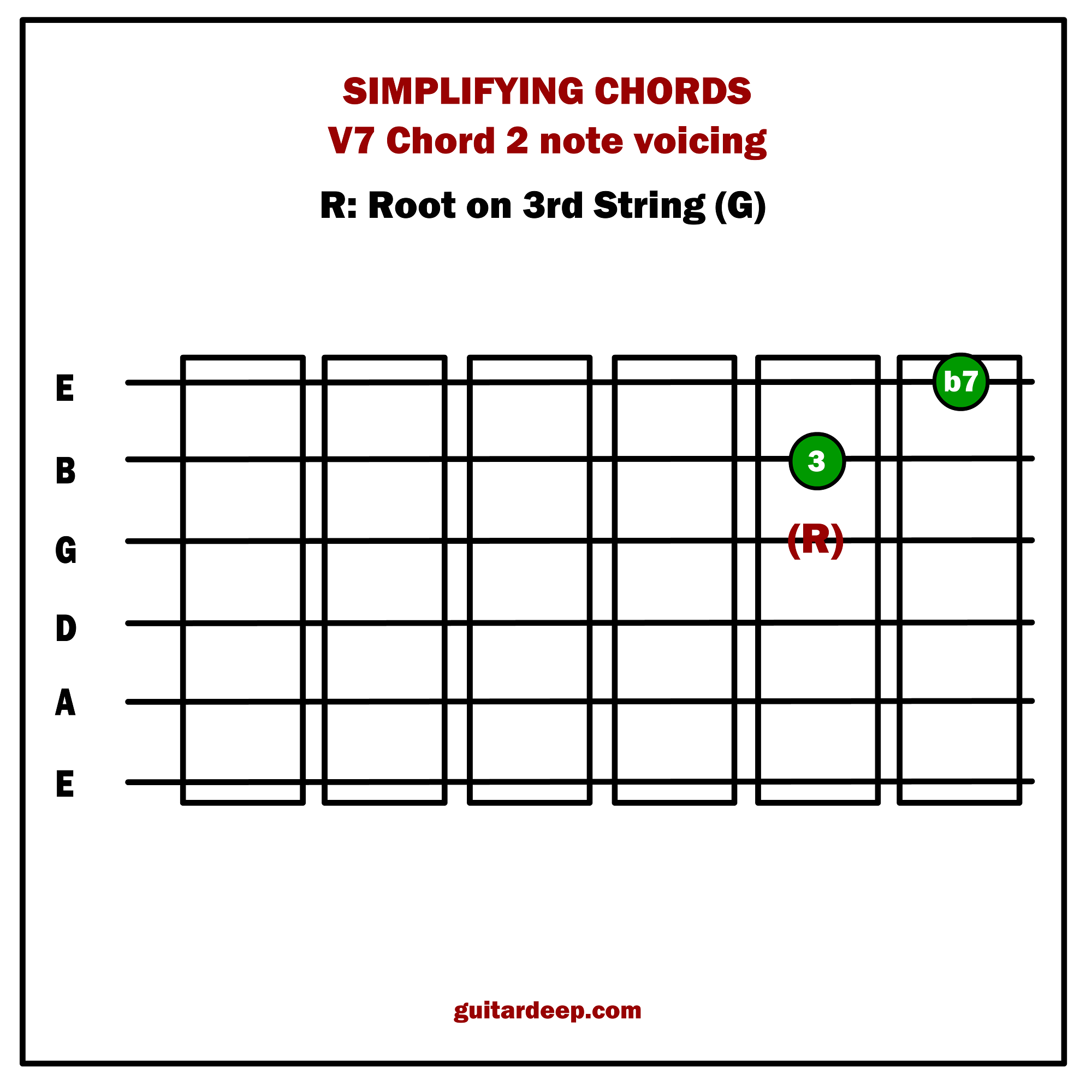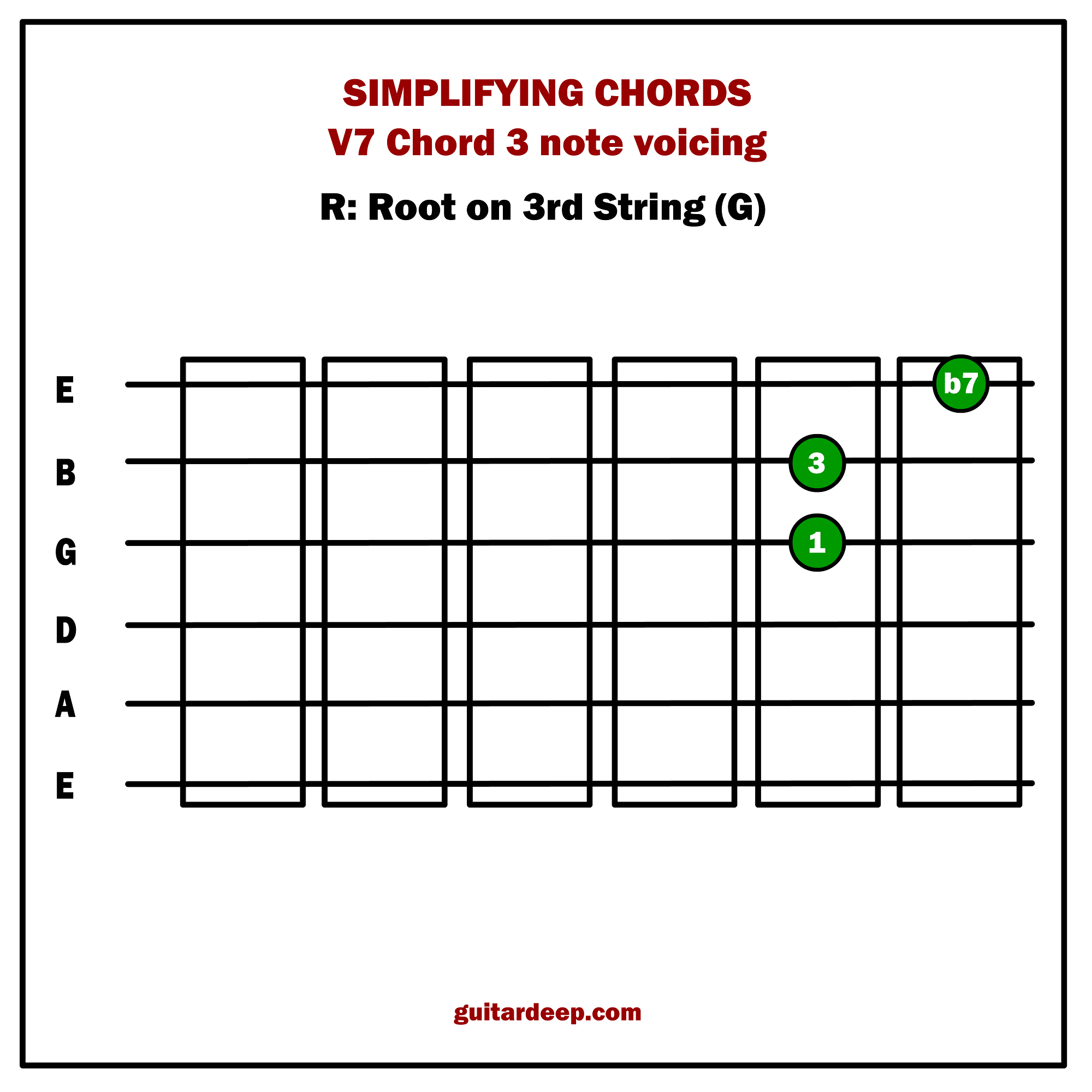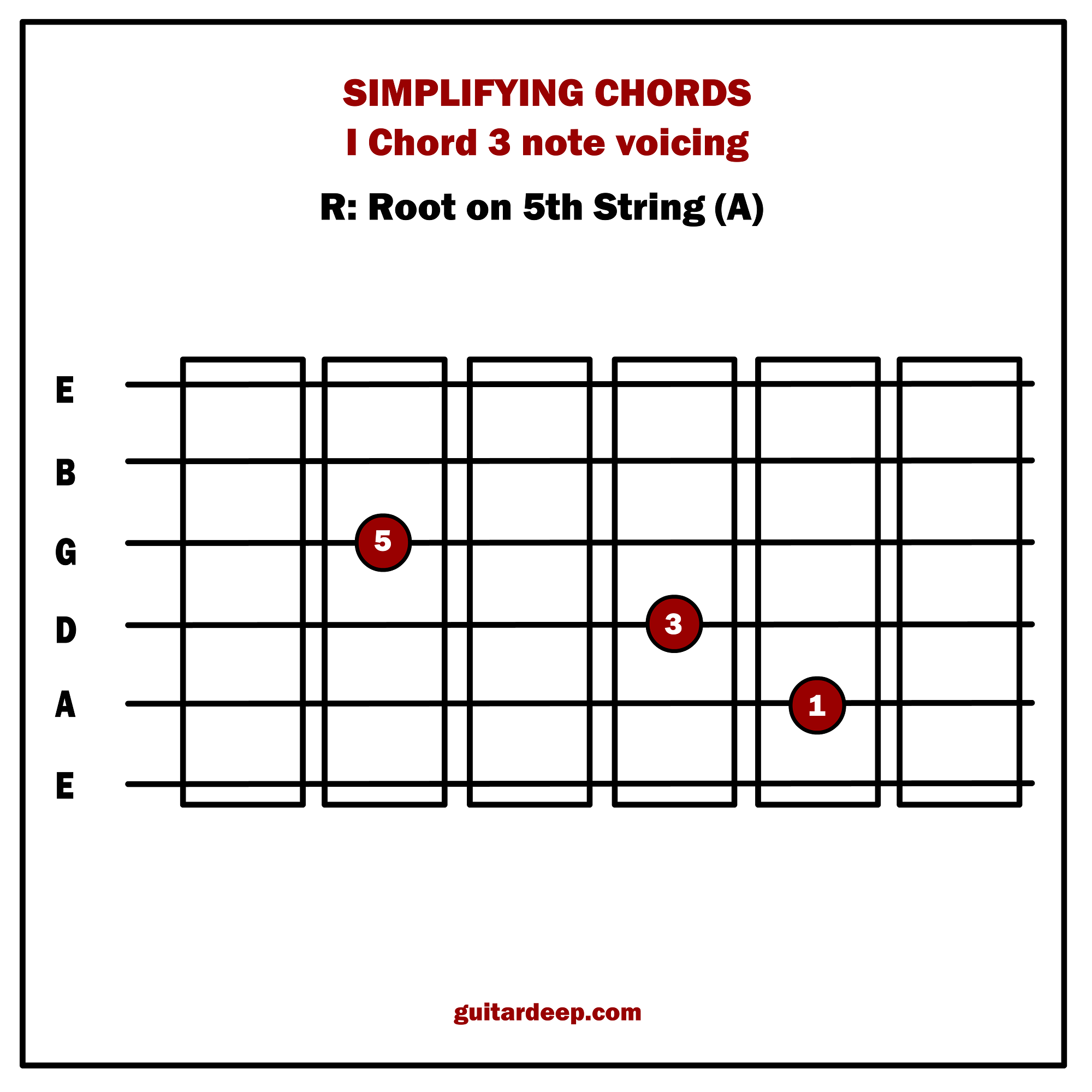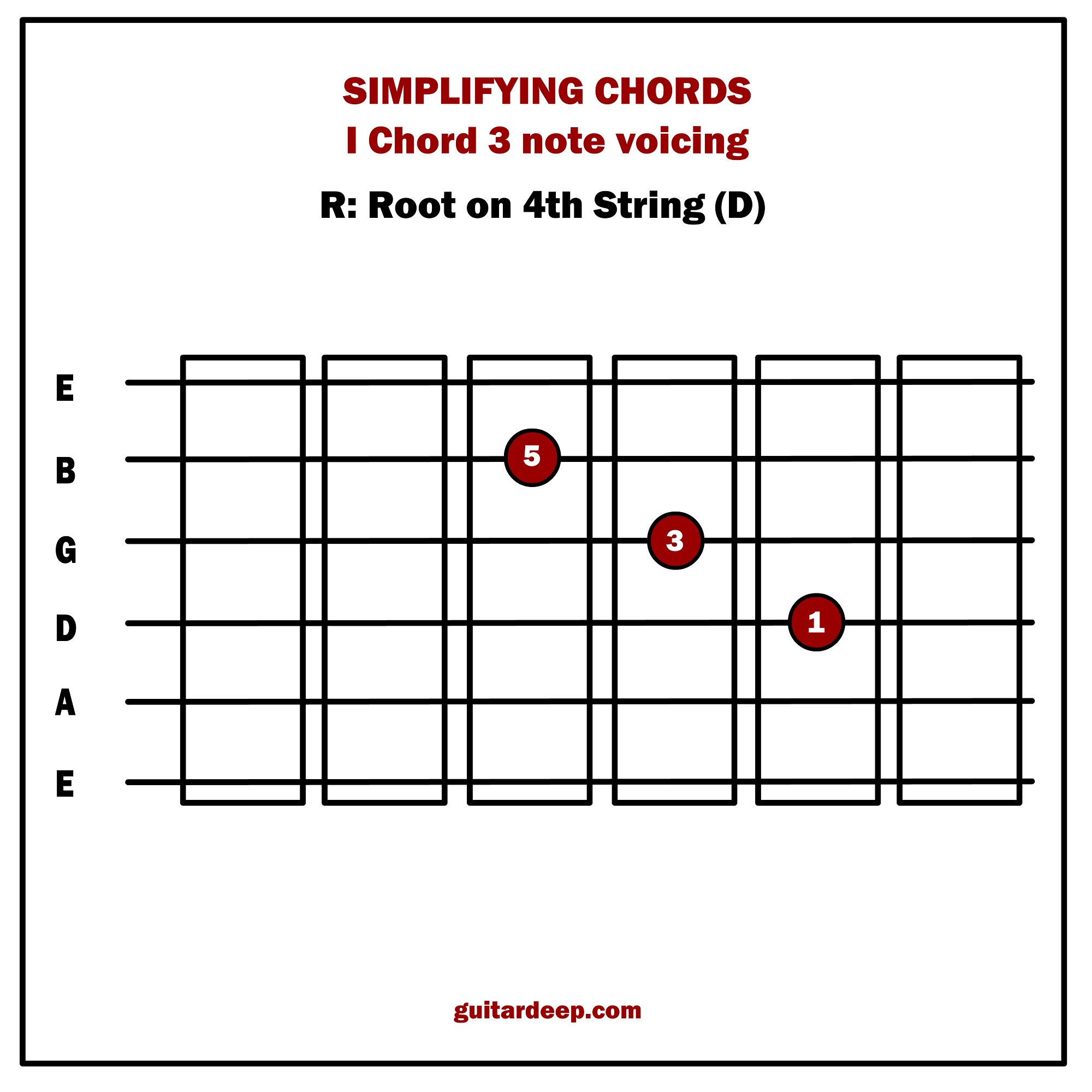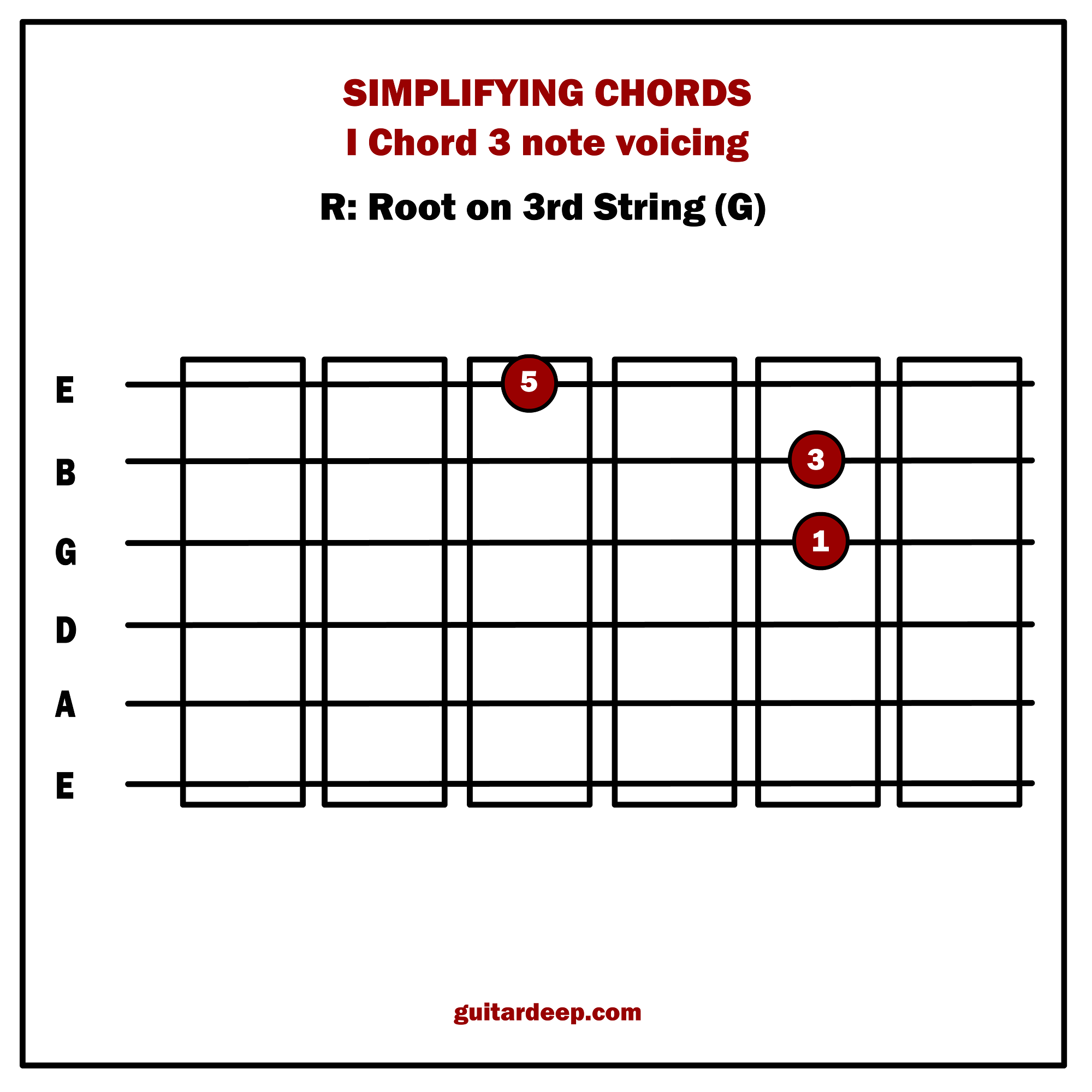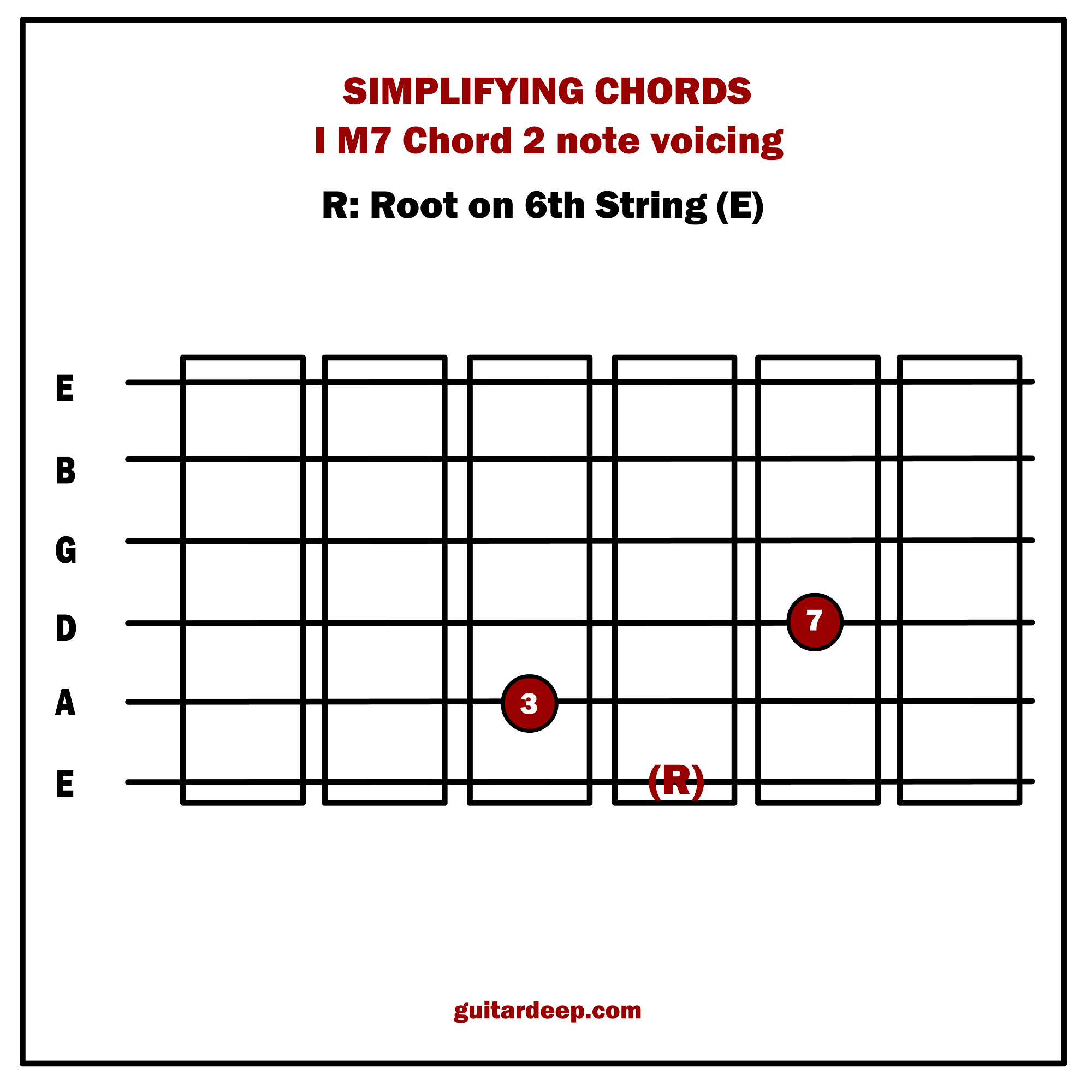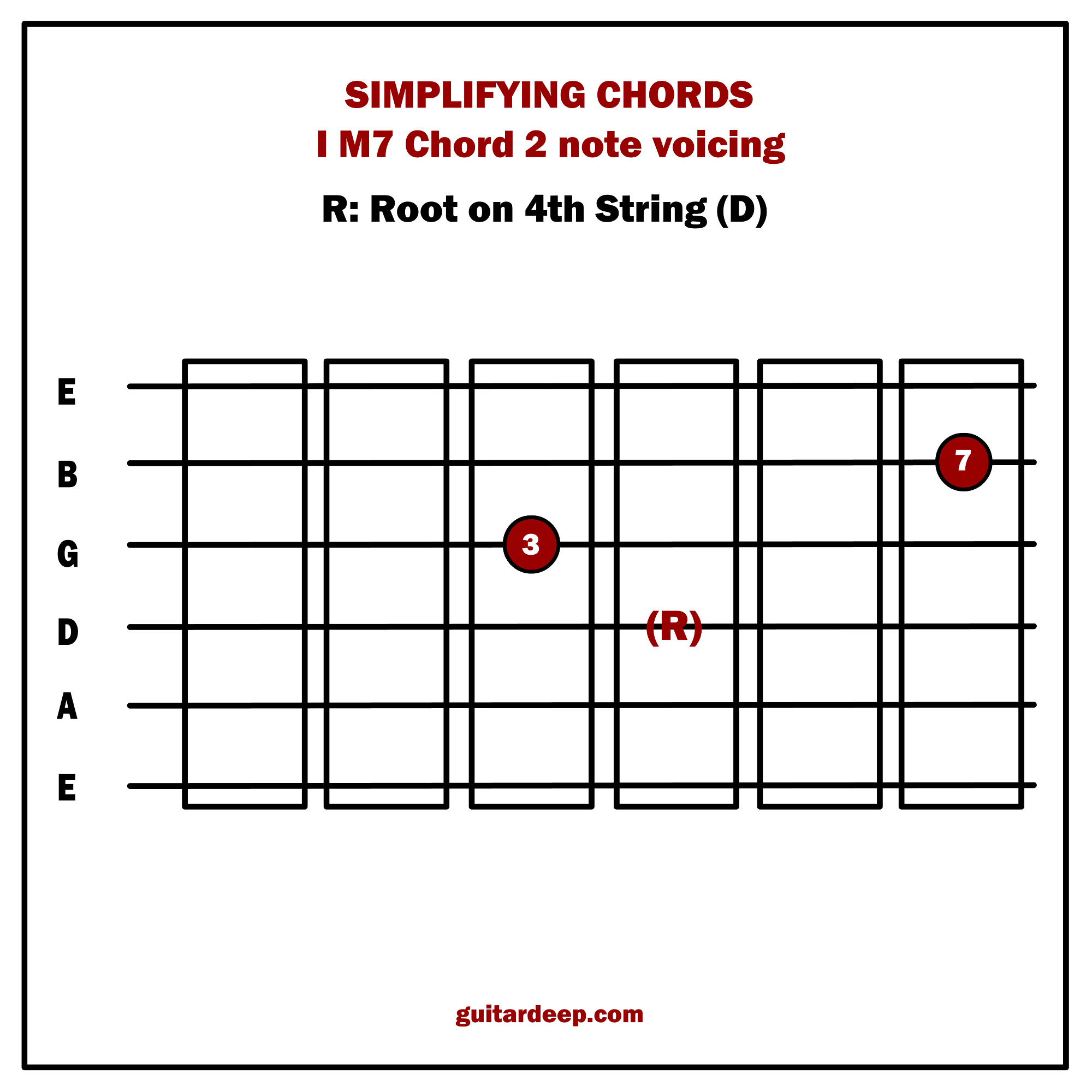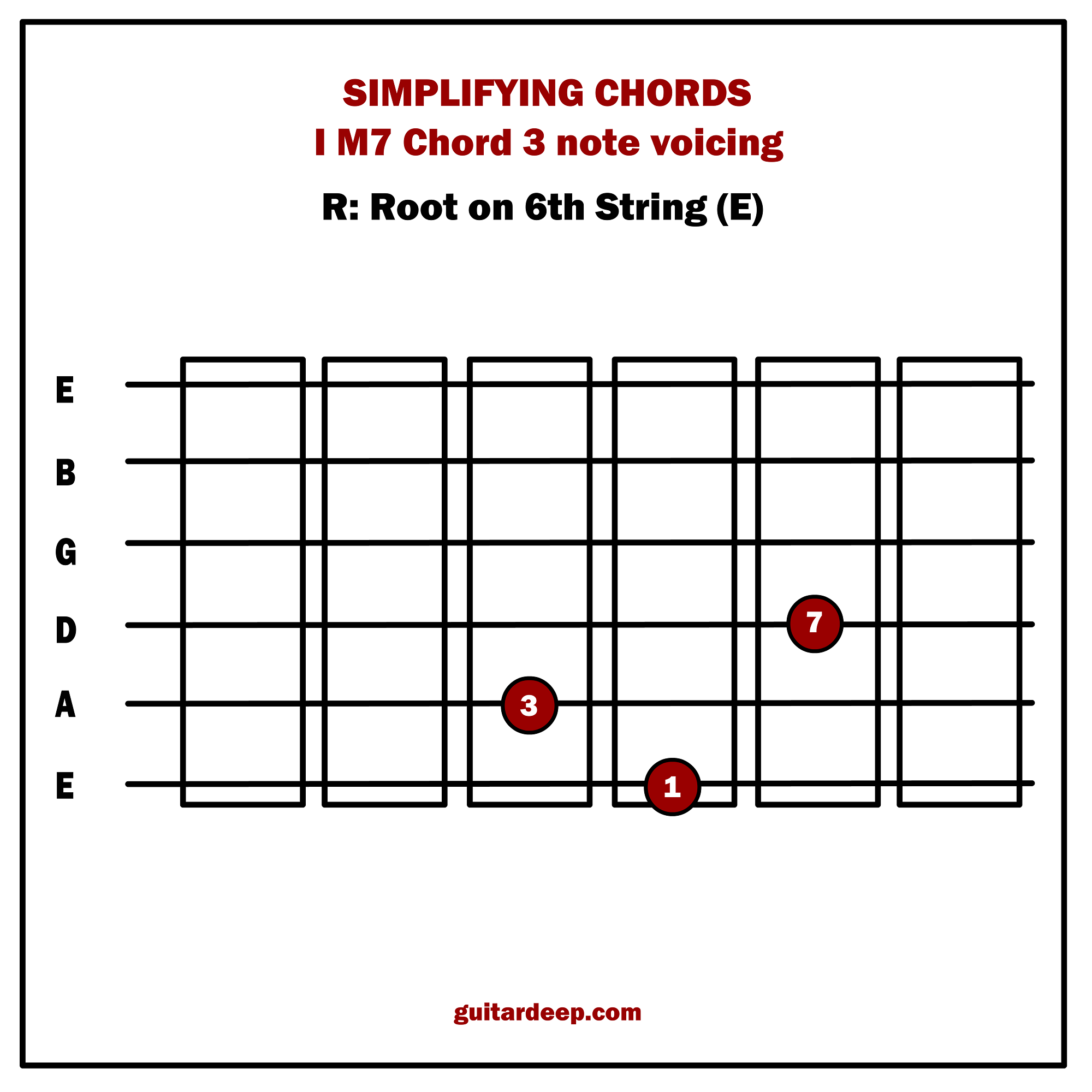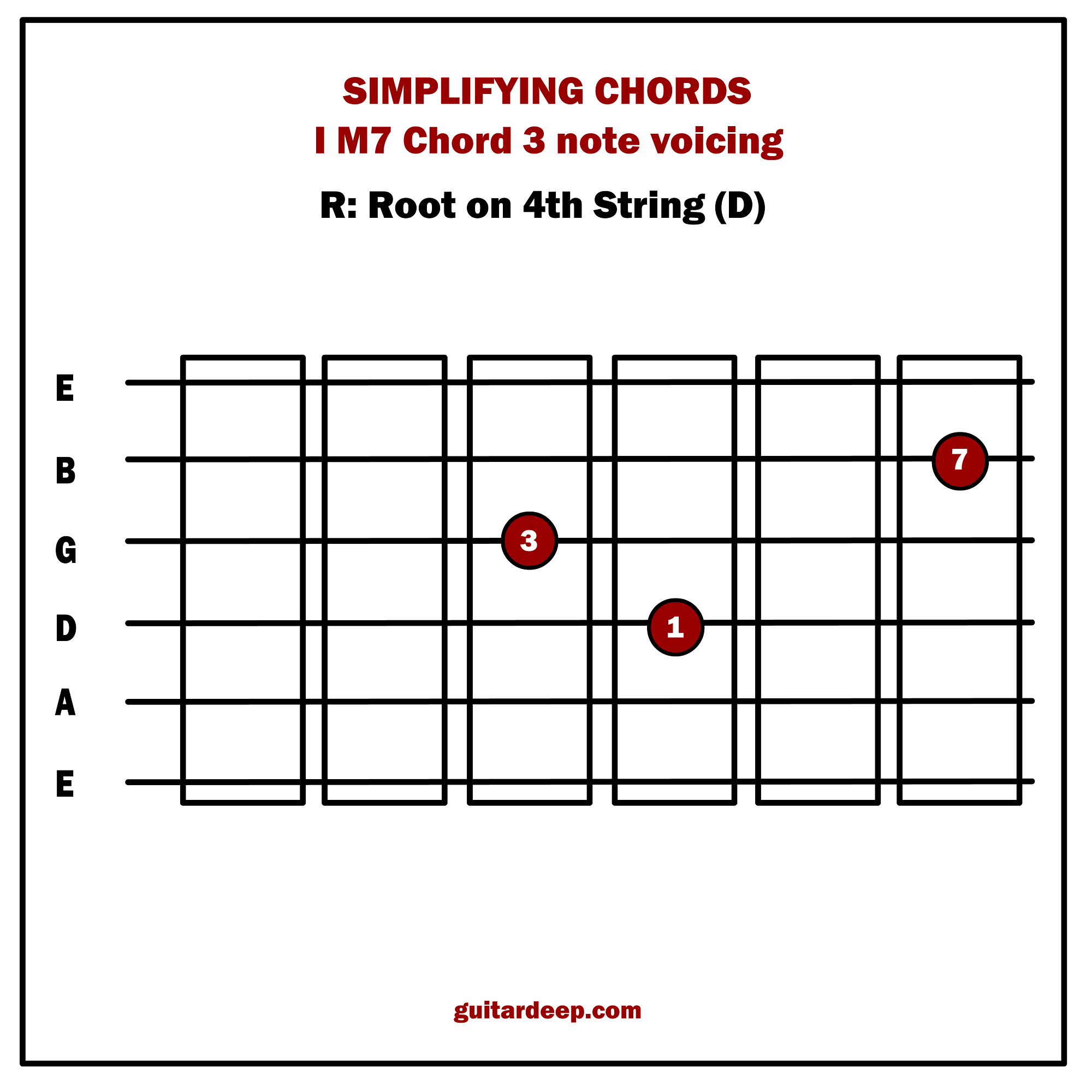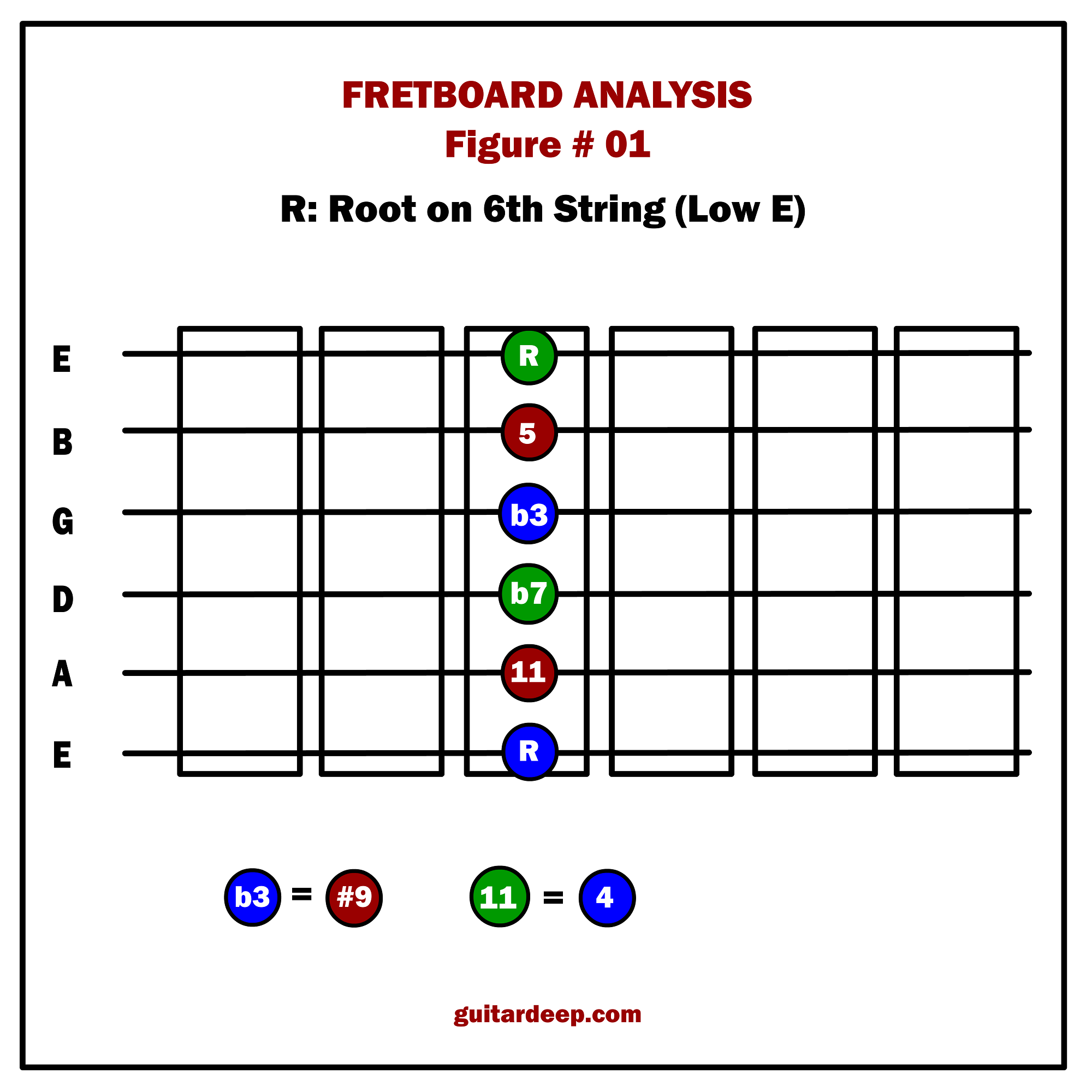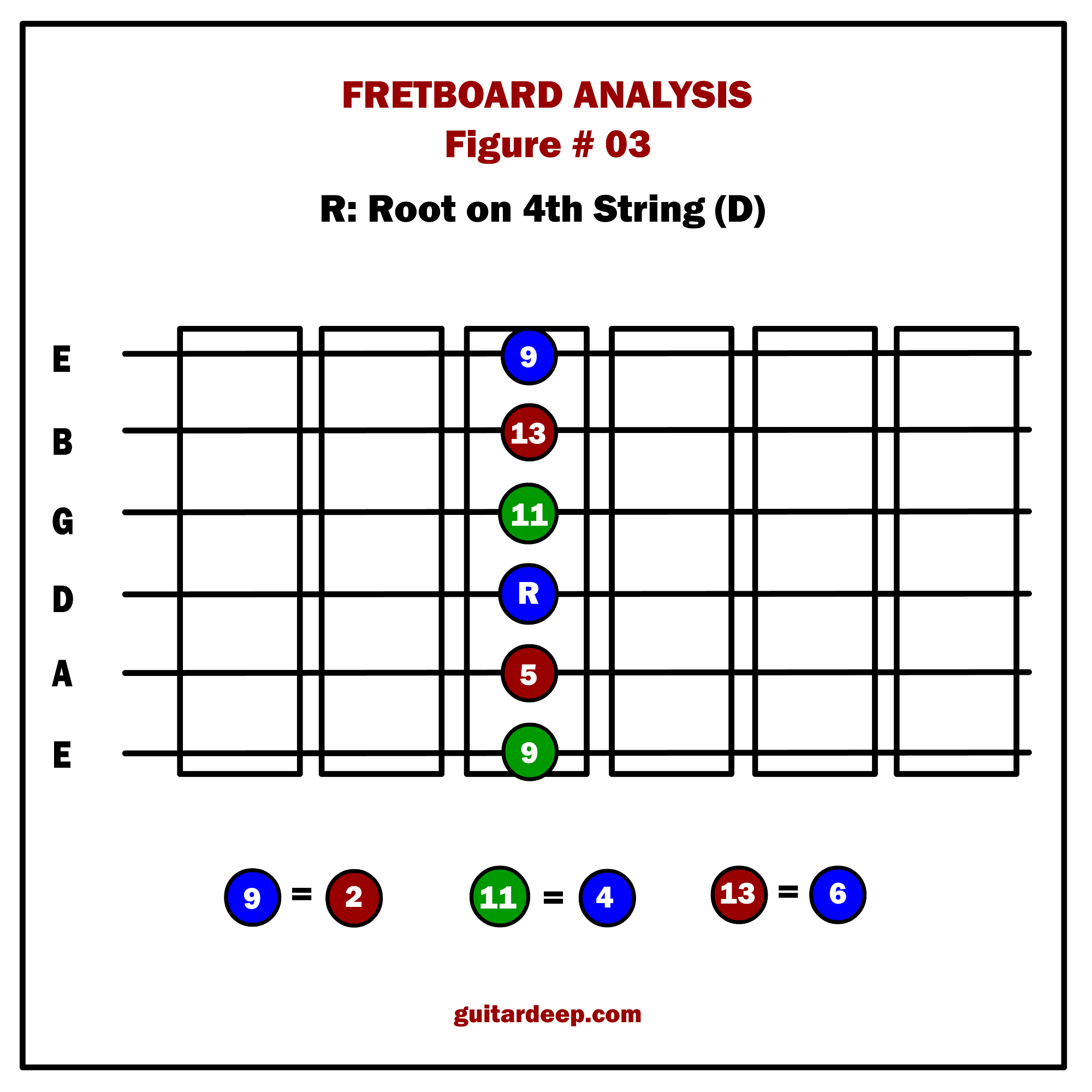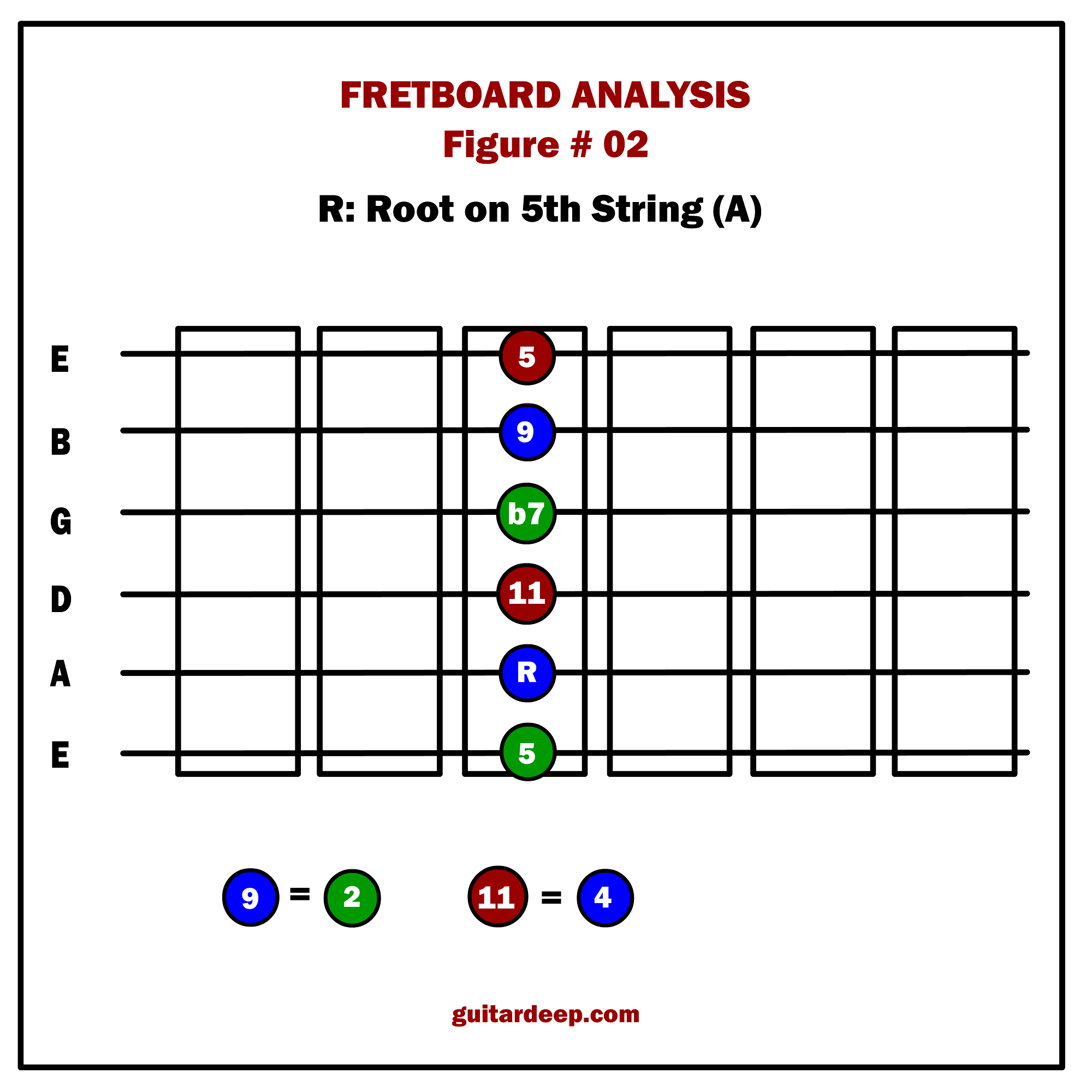Category Archives: Fretboard
Lesson # 07: Simplifying Guitar Chords Part 02
Disclaimer:
If done incorrectly, practicing guitar may cause injuries. It is one’s own responsibility to: See a physician, first and make sure that he/she is fit to play guitar. Always warm up and stretch before playing. Quit playing when he/she feels any muscular discomfort or pain.
As I mentioned before first thing to look at before you decide how to voice a chord is whether it is a major or a minor chord.
I look at it as a fruit basket. The root note and the perfect 5th note are the basket. 3rd and the 7th note are the fruit, the flavor, so to speak.
If you’re playing in a band the basket part is usually taken care of by the bass and the keyboards. To give the flavor you don’t need to be playing 6 string voicing of a simple major seven or a minor seven chord.
Of course, the situations may vary and sometimes it is wiser to play full, rich sounding chords, especially if you’re the only comping instrument. And I am by no way endorsing an idea of learning less about theory and chords. However, for the sake of smoother movement on the fretboard, chord-soloing and saving extra left-hand fingers for extra flavors that may come after those 7th notes, this may be a very beneficial approach.
Another benefit may be for the beginners who dread those complex-looking chords that require super stretched left-hand positions and avoid them altogether thus delay their comping progress, whereas using a few triads and four note shapes would suffice, at least until they get to manage those difficult alternatives just as well as the easier ones.
In my personal opinion,
Having the skill to play almost any melody in every which way possible and yet choosing not to complicate a musical piece unnecessarily is the wisest approach.
Learn your material inside out first and then go crazy improvising knowing that you have the foundation to fall back on.
Let’s start by seventh chords and simple IIm7 – V7 – I progression which you will come across everywhere.
In the key of G
G major scale: G, A, B, C, D, E, F#
IIm7 - V7 - I for this Key:
Am7 - D7 - G
Notes of the chords:
Am7: A, C, E, G
D7: D, F#, A, C
G: G, B, D
If you come across a chord like Am7b9, D7#9 don’t worry about those #9, b9, 11s and whatnot.
What’s important here is that you give the main flavor of those chords 3rd and the 7th notes. You can get away only playing those 2 notes although we’re going to include root notes in the next example, as well.
2 note voicings (3rds and 7ths) for the chords are as follows,
Am7: C and G
D7: F# and C
G: we play the main triad
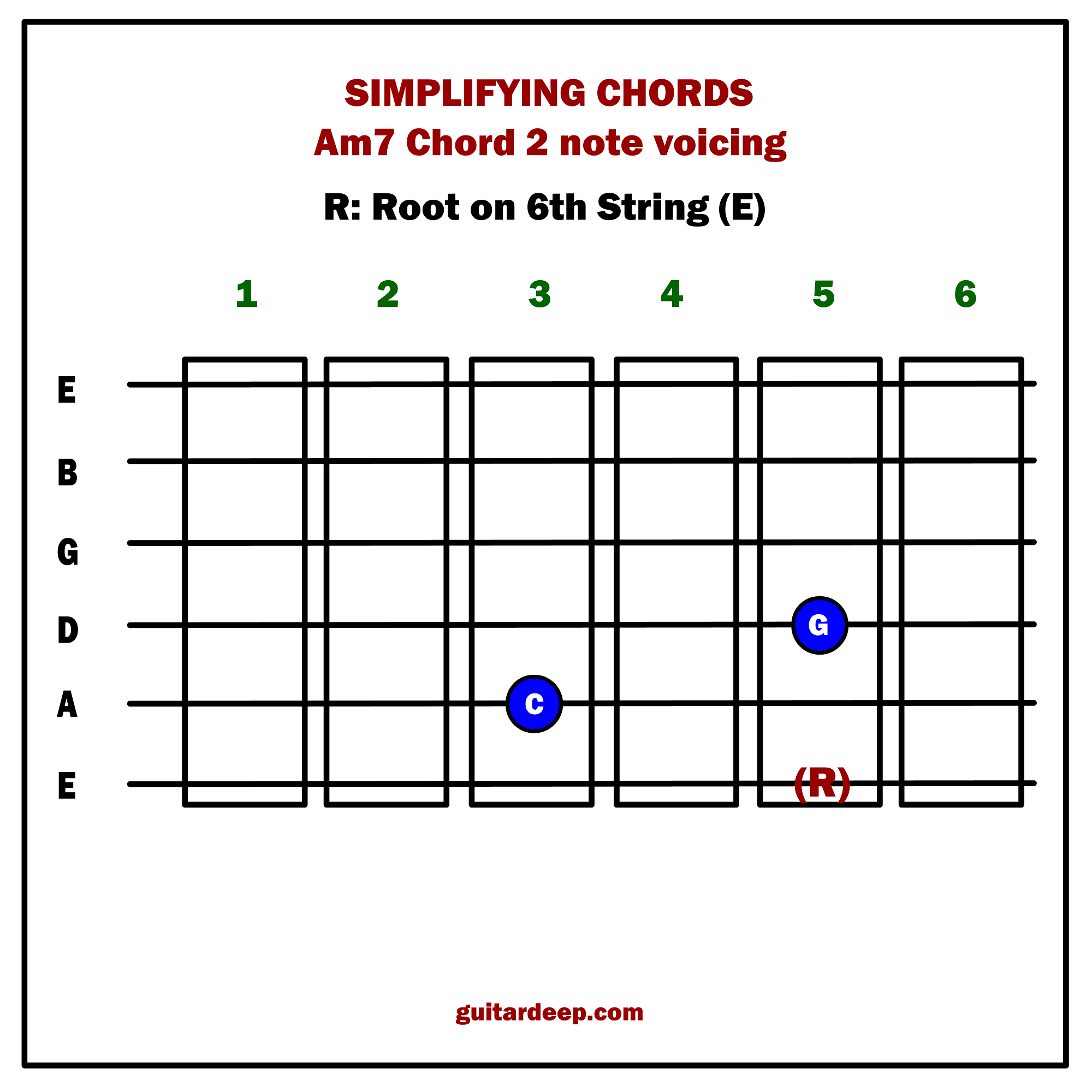
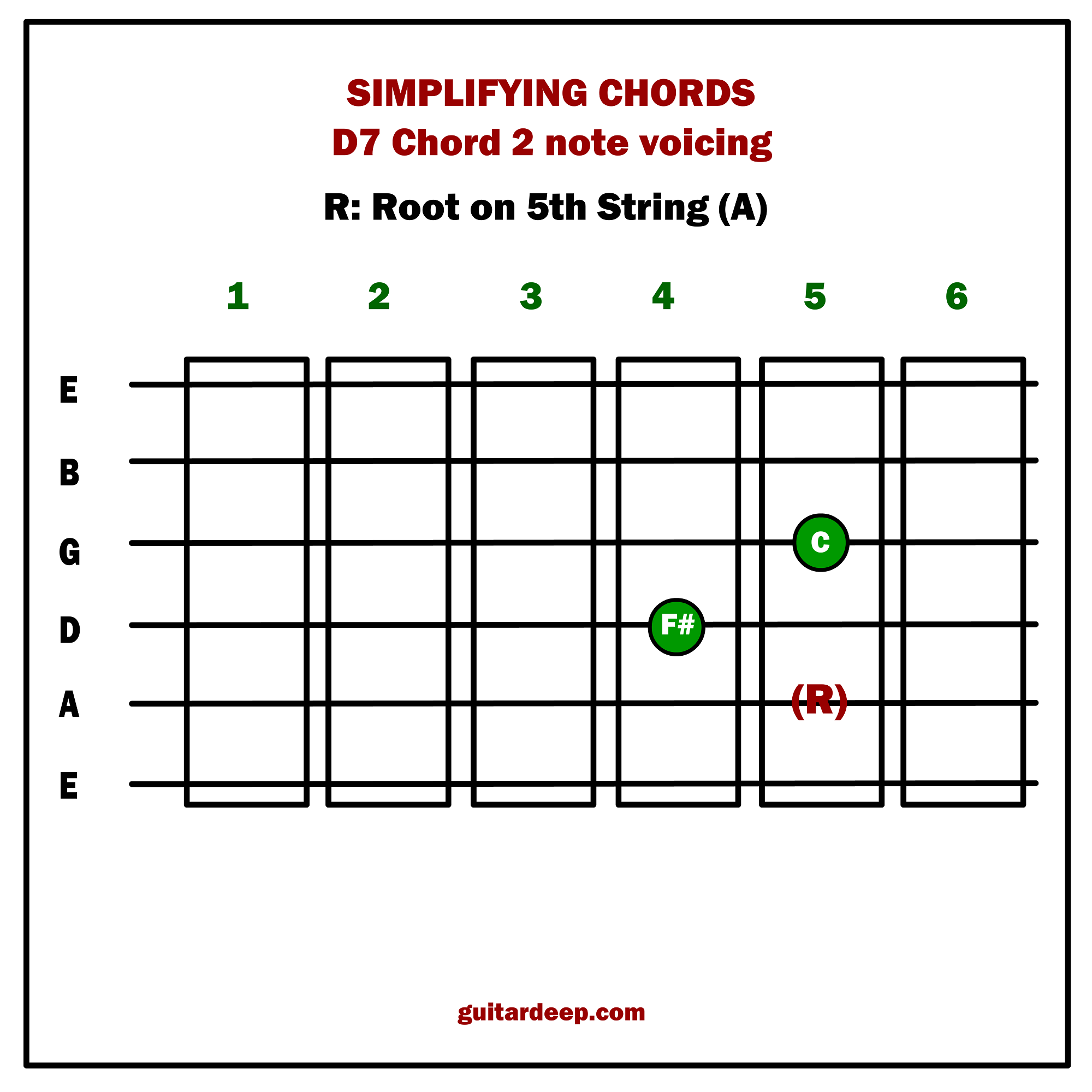
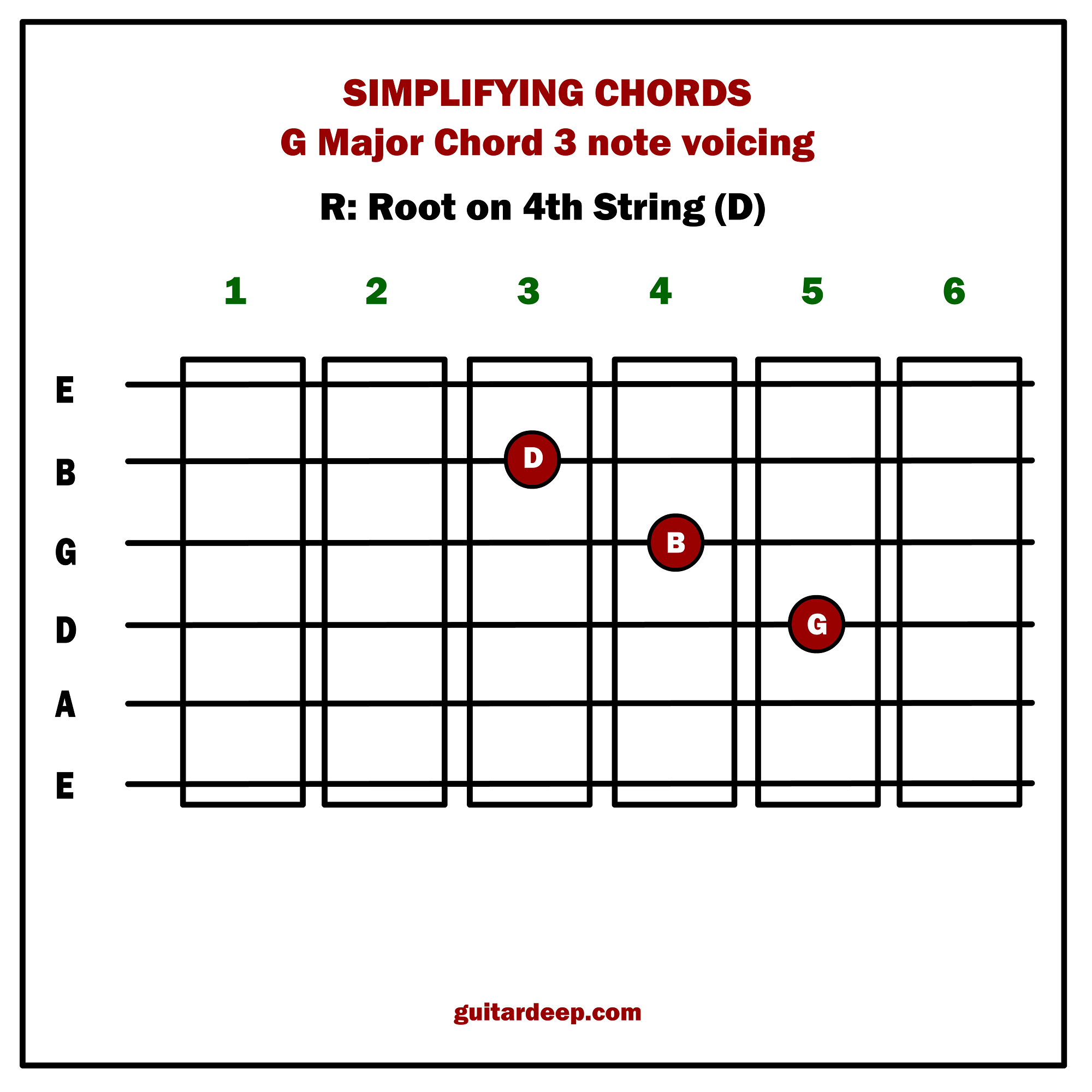
But if want a softer resolution after D7 and we use G major 7
GM7: G, B, D, F#
GM7: B and F# (3rd and 7th)


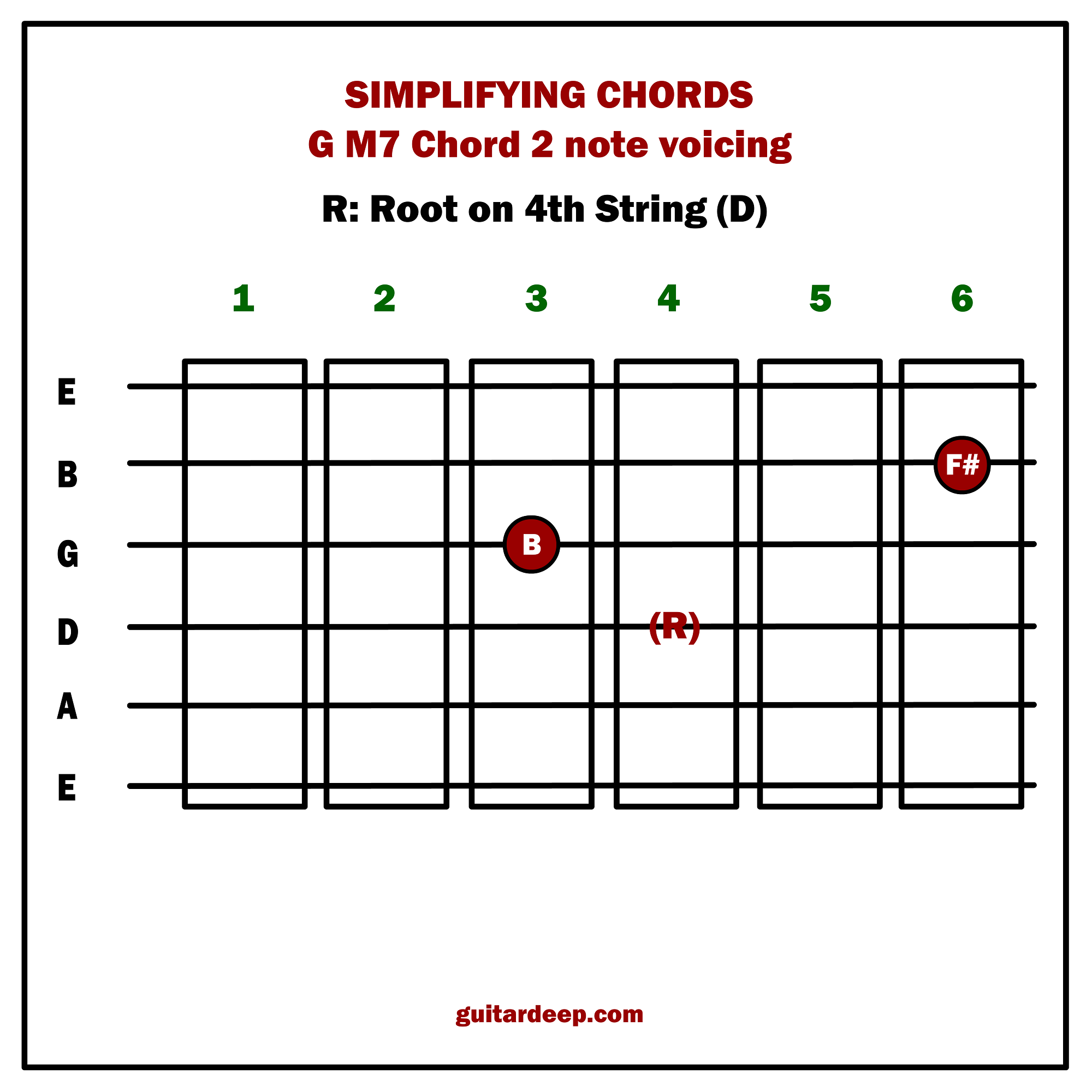
If we add the roots as well,
Am7: A, C, G
D7: D, F#, C
G: G, B, D
GM7: G, B, F

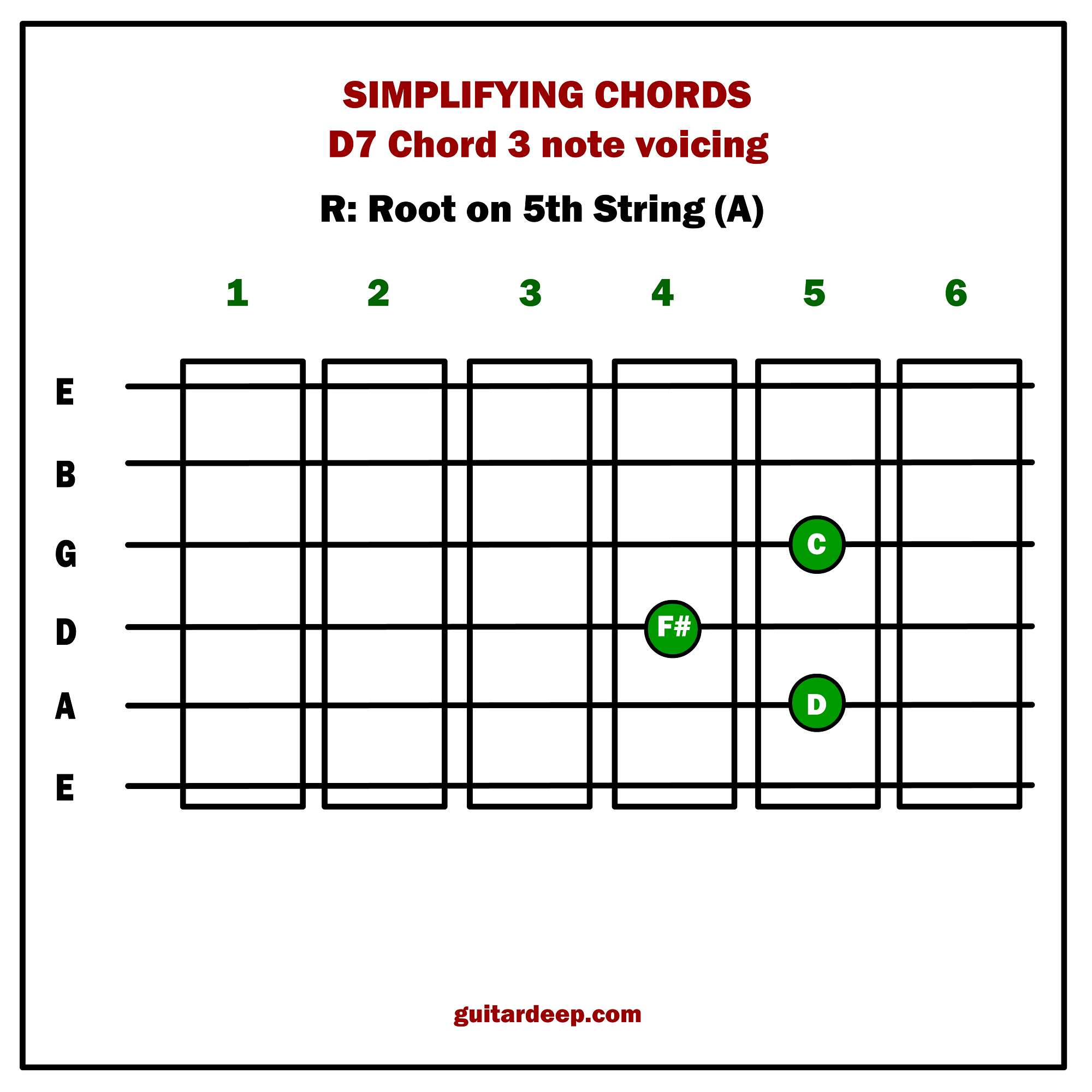



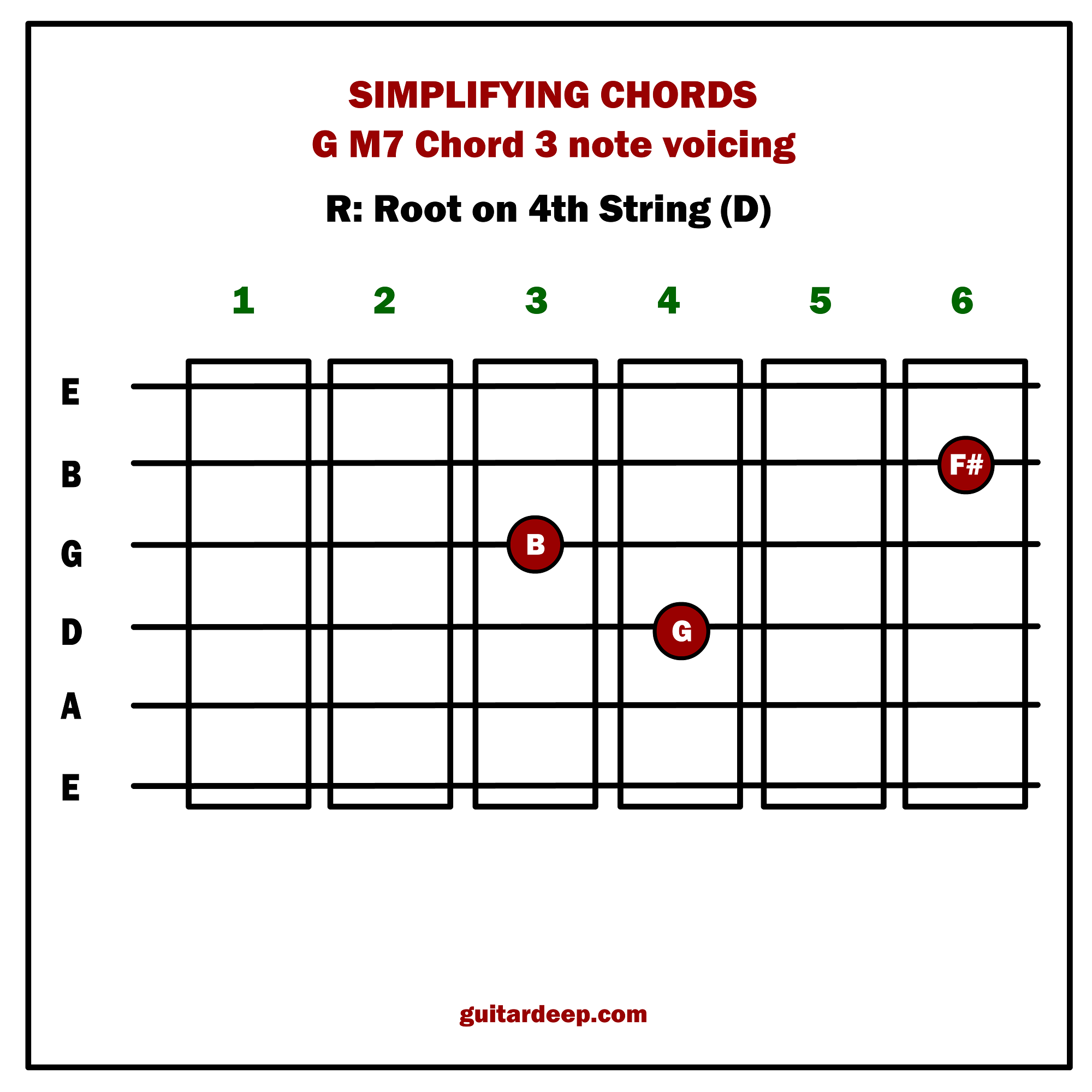
Now let’s apply all that to C Major key and its IIm7 - V7 - I proggression:
C major scale: C, D, E, F, G, A, B
IIm7 - V7 - I for this Key:
Dm7 - G7 - C
Notes of the chords:
Dm7: D, F, A, C
G7: G, B, D, F
C: C, E, G
2 note voicings (3rds and 7ths) for the chords are as follows,
Dm7: F and C
G7: B and F
C: we play the main triad
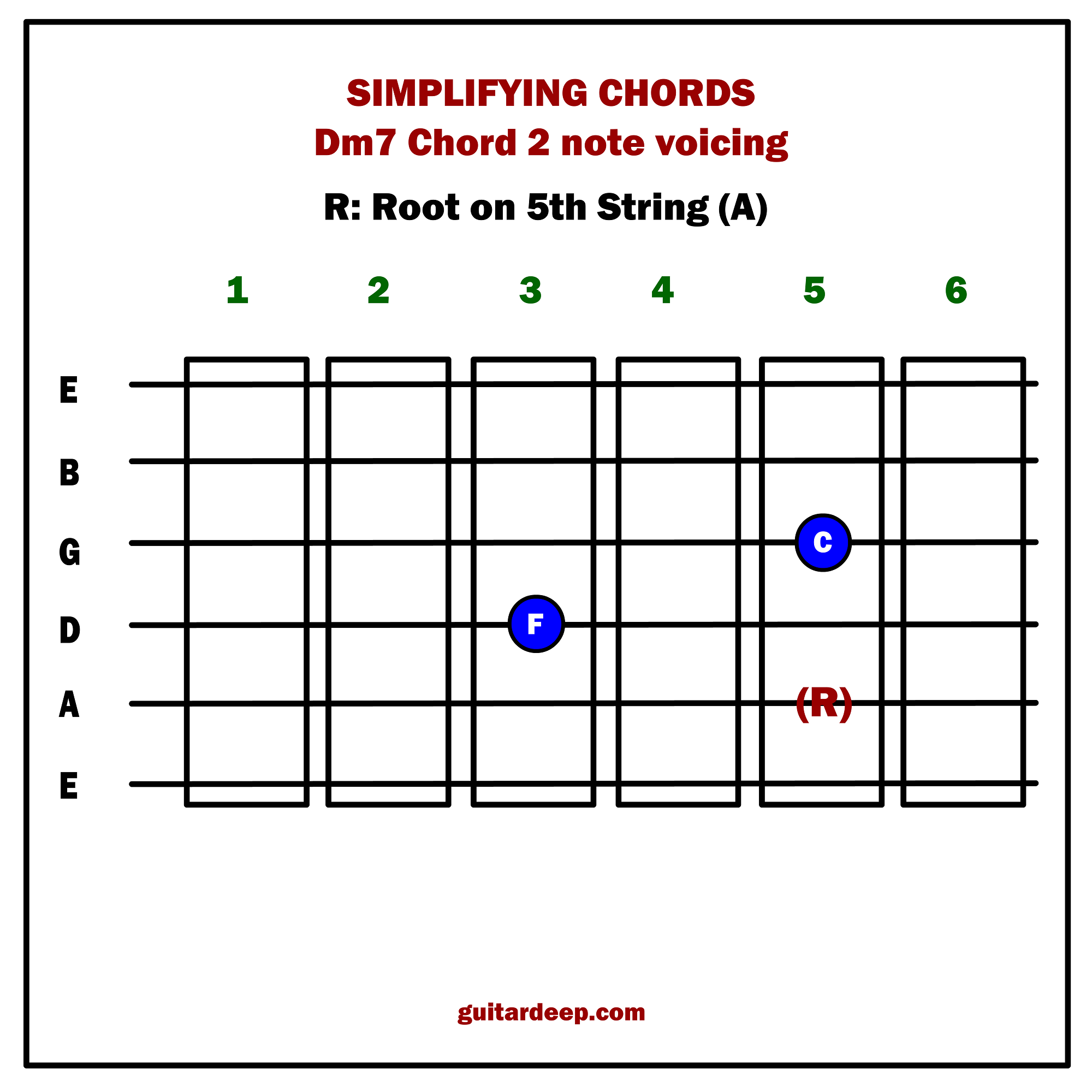
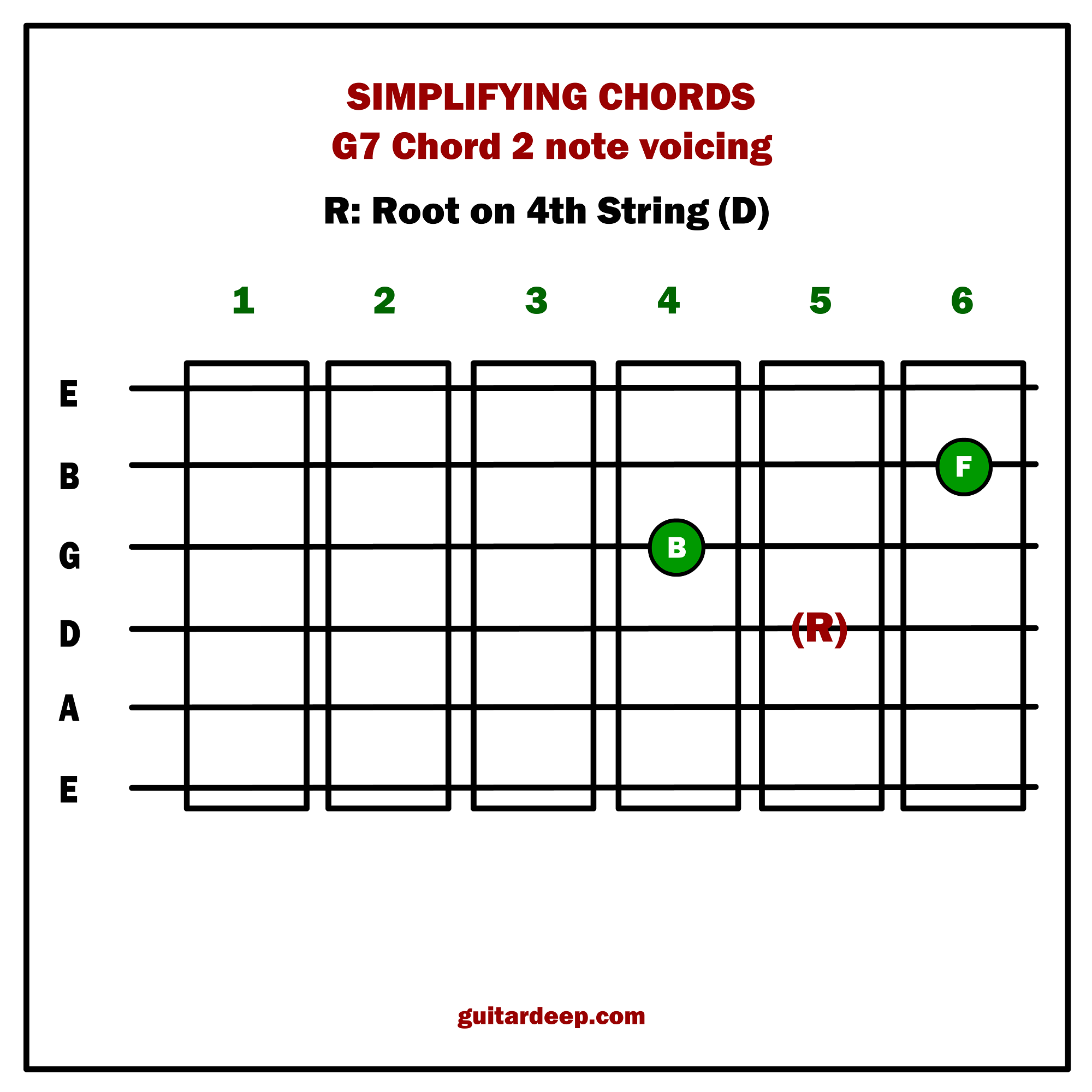

But if want a softer resolution after G7 and we use C major 7
CM7: C, E, G, B
CM7: E and B (3rd and 7th)
If we add the roots as well,
Dm7: D, F, C
G7: G, B, F
C: C, E, G
CM7: C, D, B

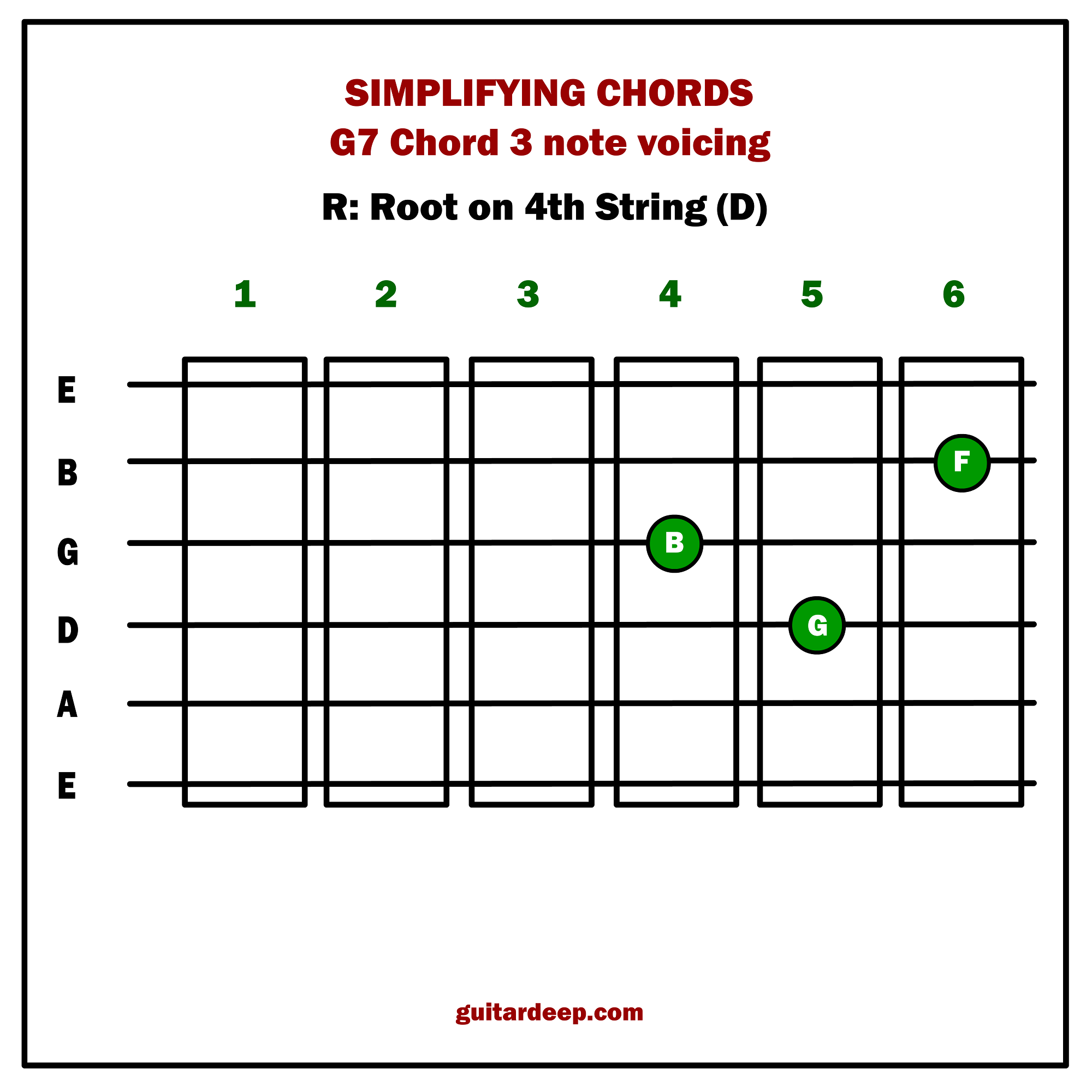



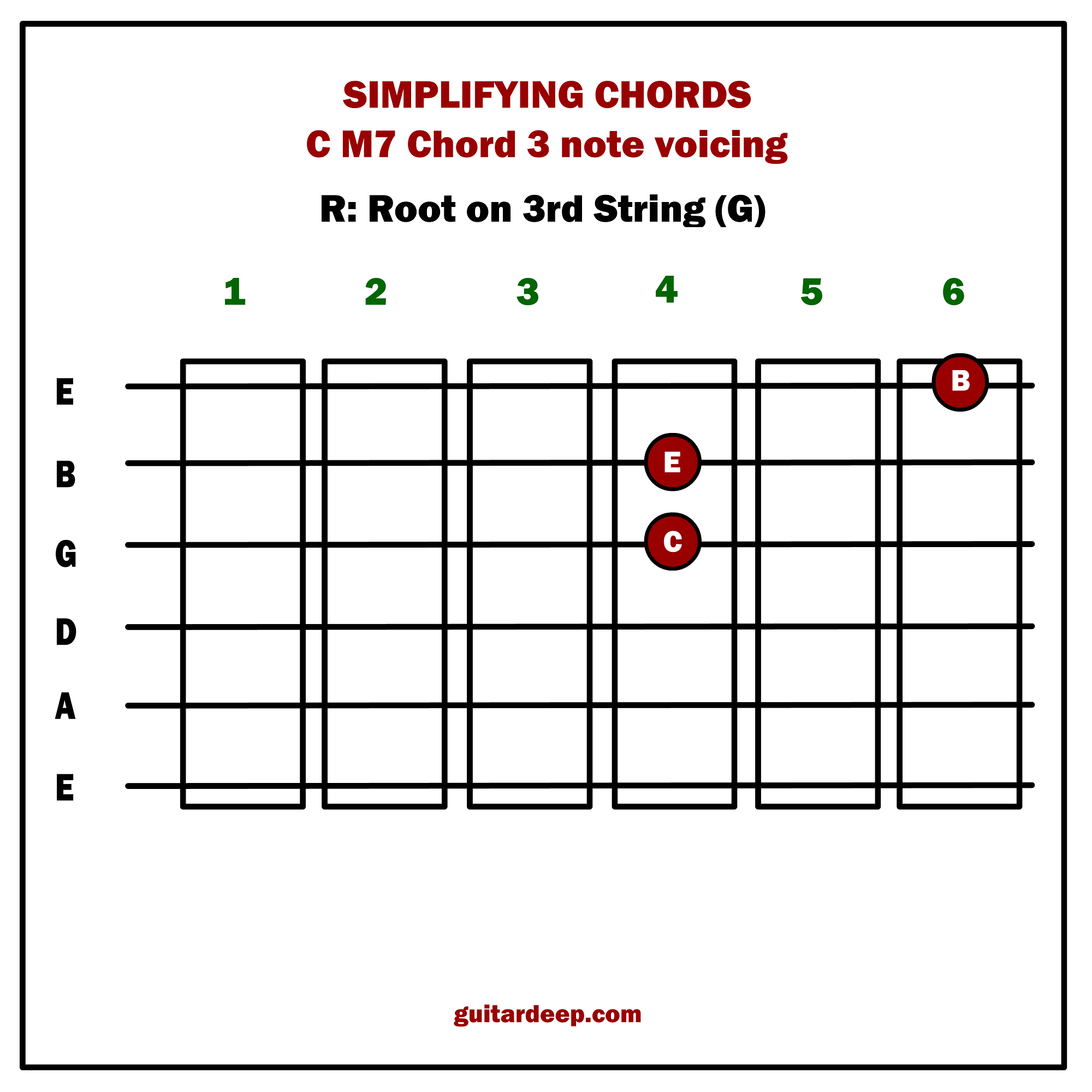
Below are more possibilities to create your own combinations. No specific key, just the degrees on certain strings:
IIm7 Chord (with 2-Note Voicings)
IIm7 Chord (with 3-Note Voicings)
V7 Chord (with 2-Note Voicings)
V7 Chord (with 3-Note Voicings)
I Chord (with 3-Note Voicings)
I Maj7 Chord (with 2-Note Voicings)
I Maj7 Chord (with 3-Note Voicings)
![]()

